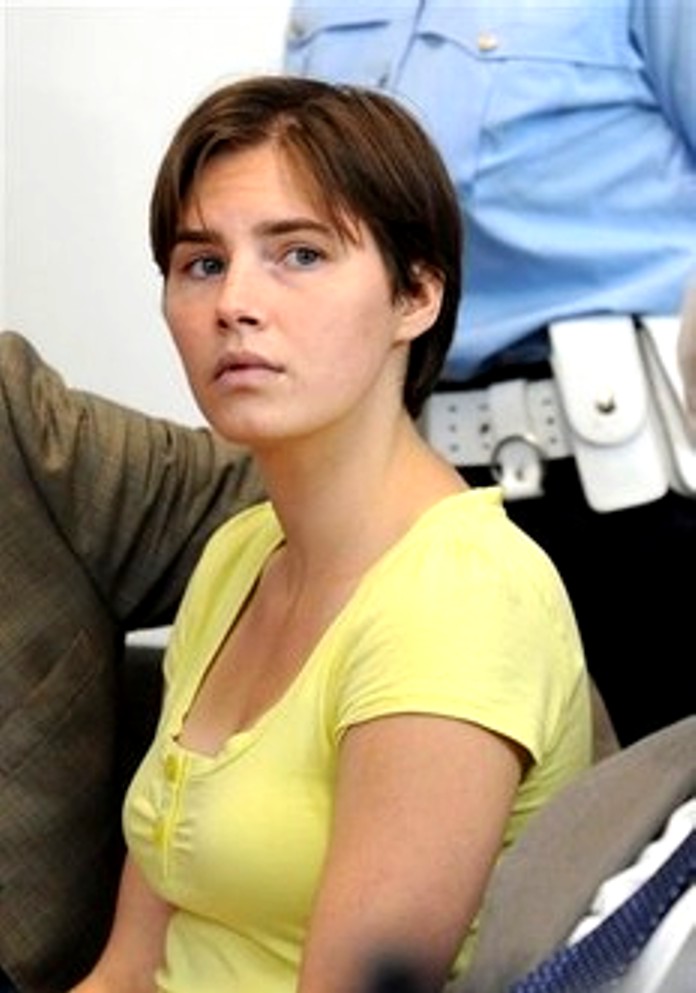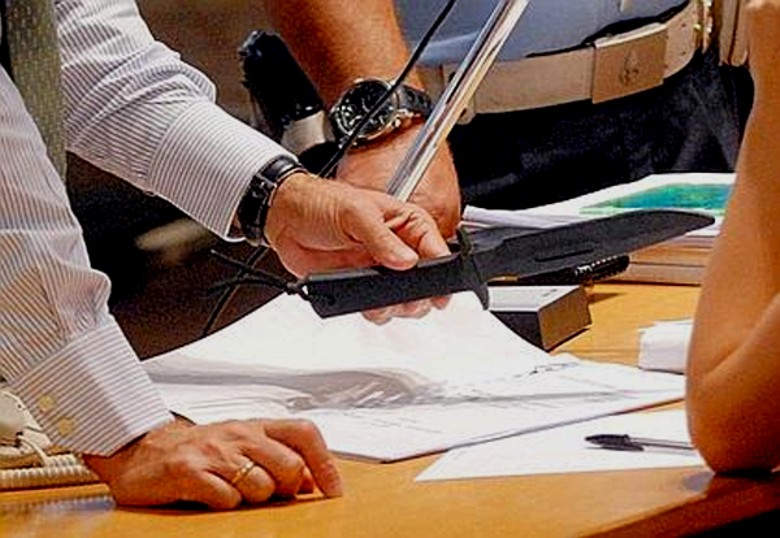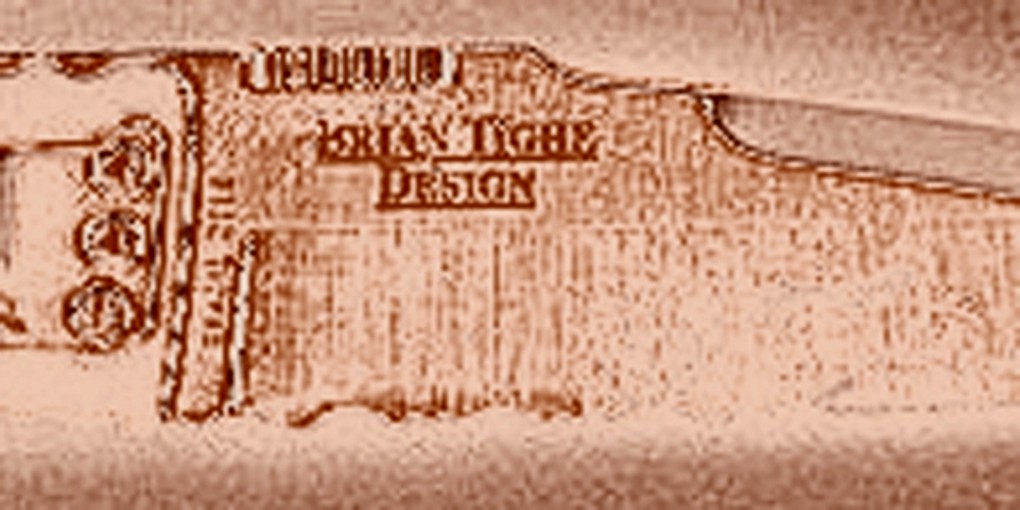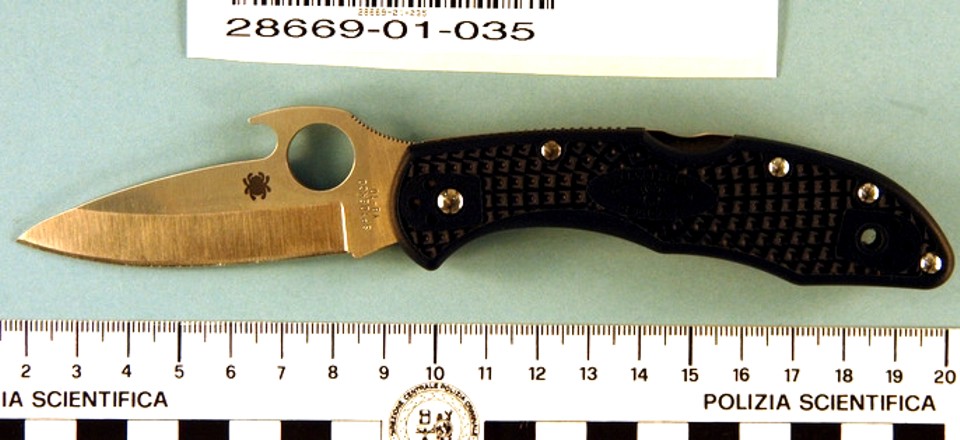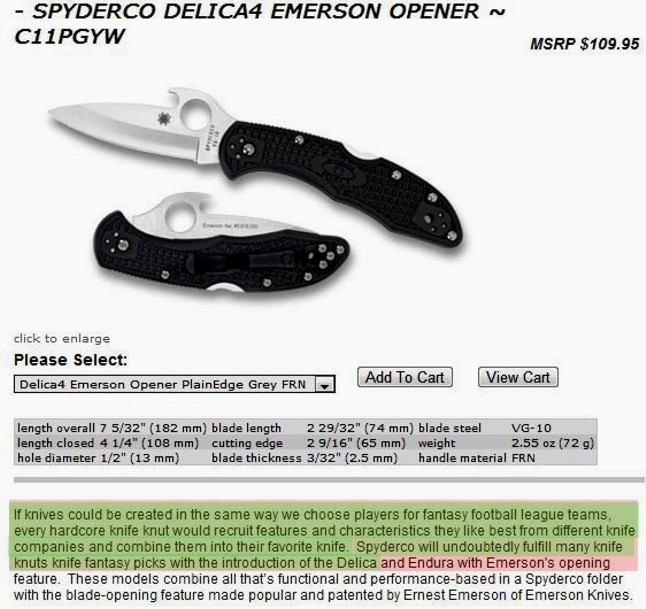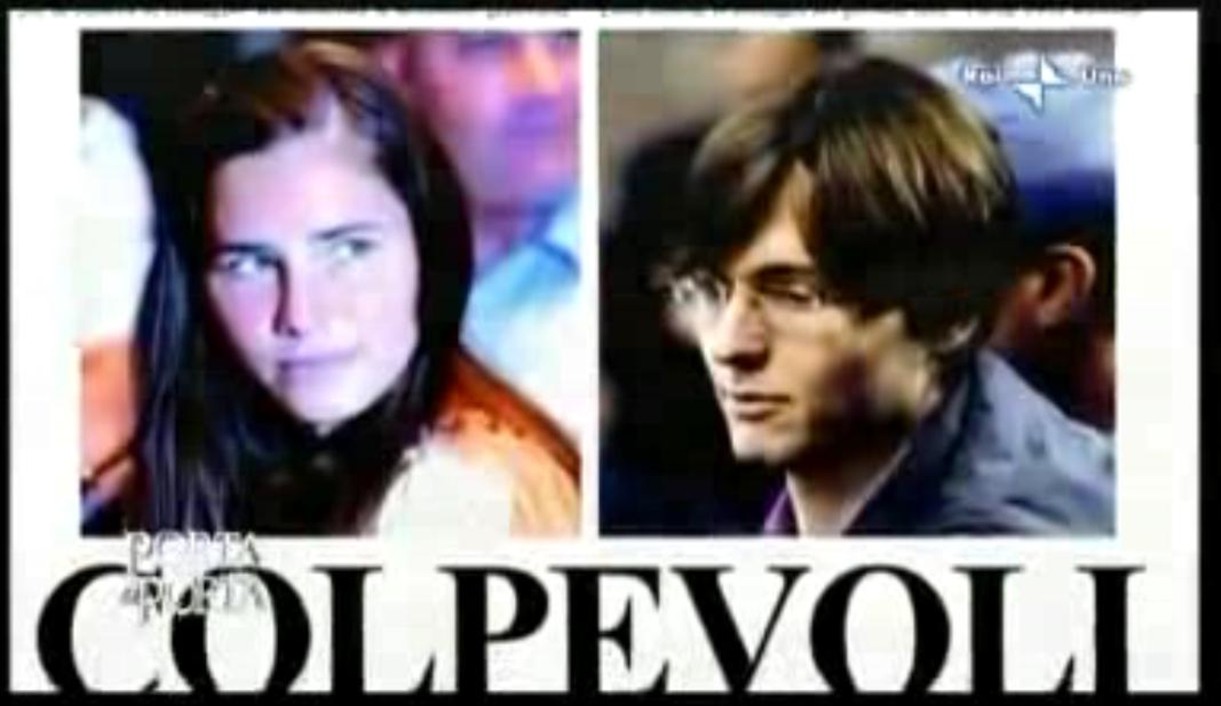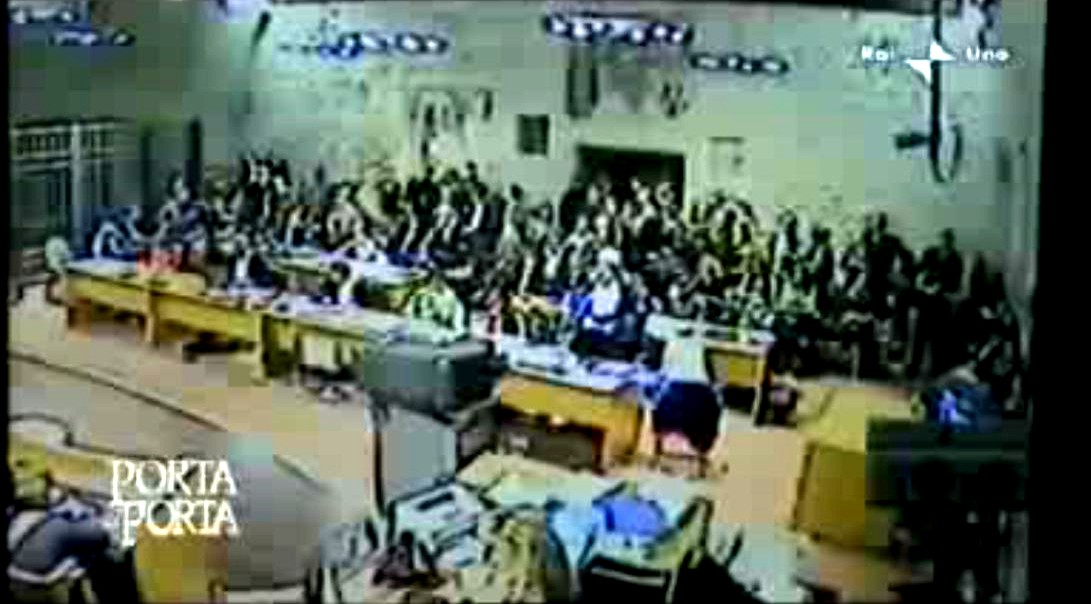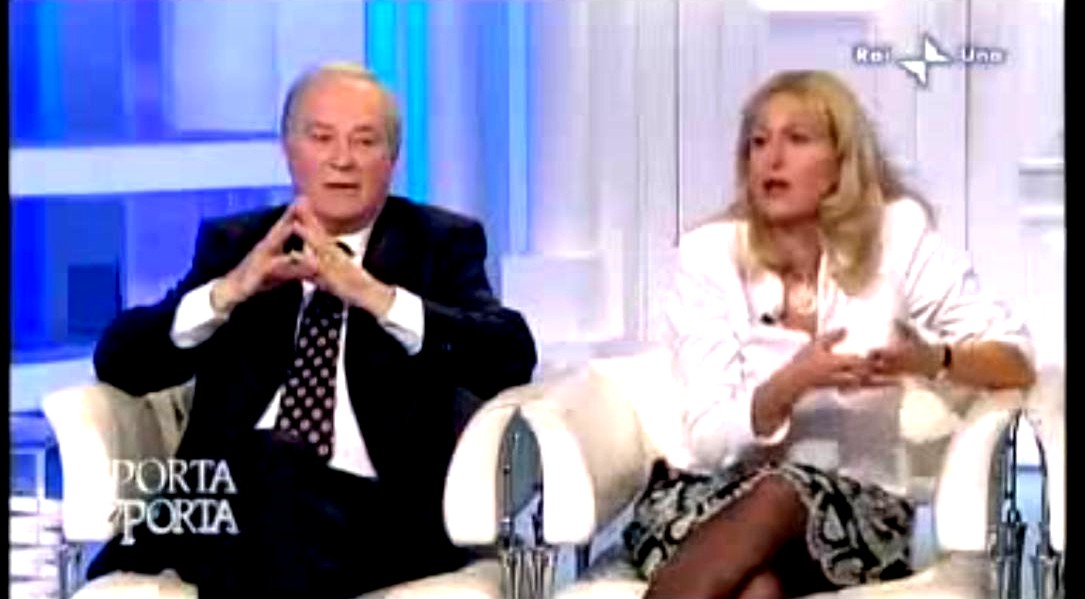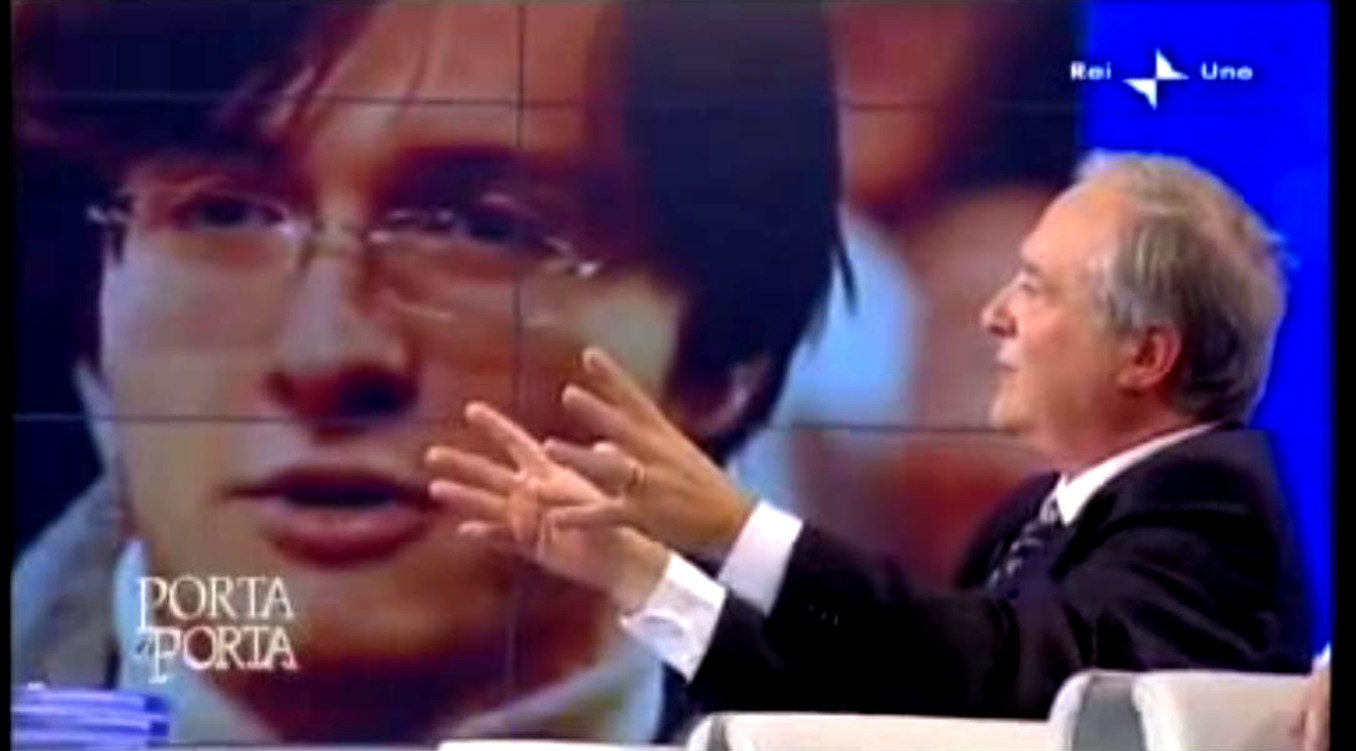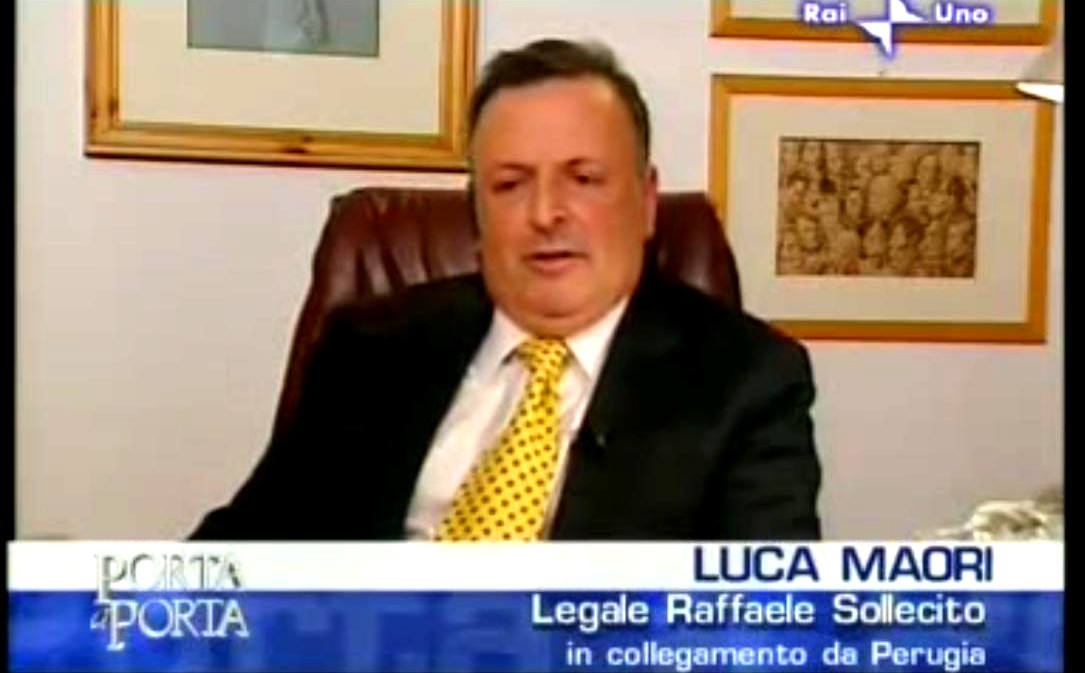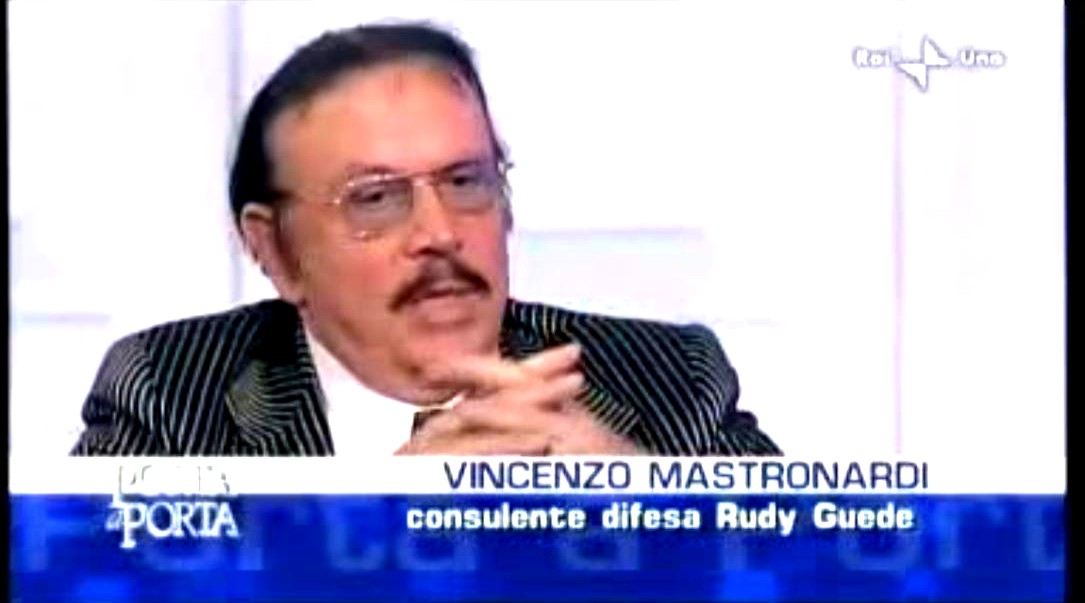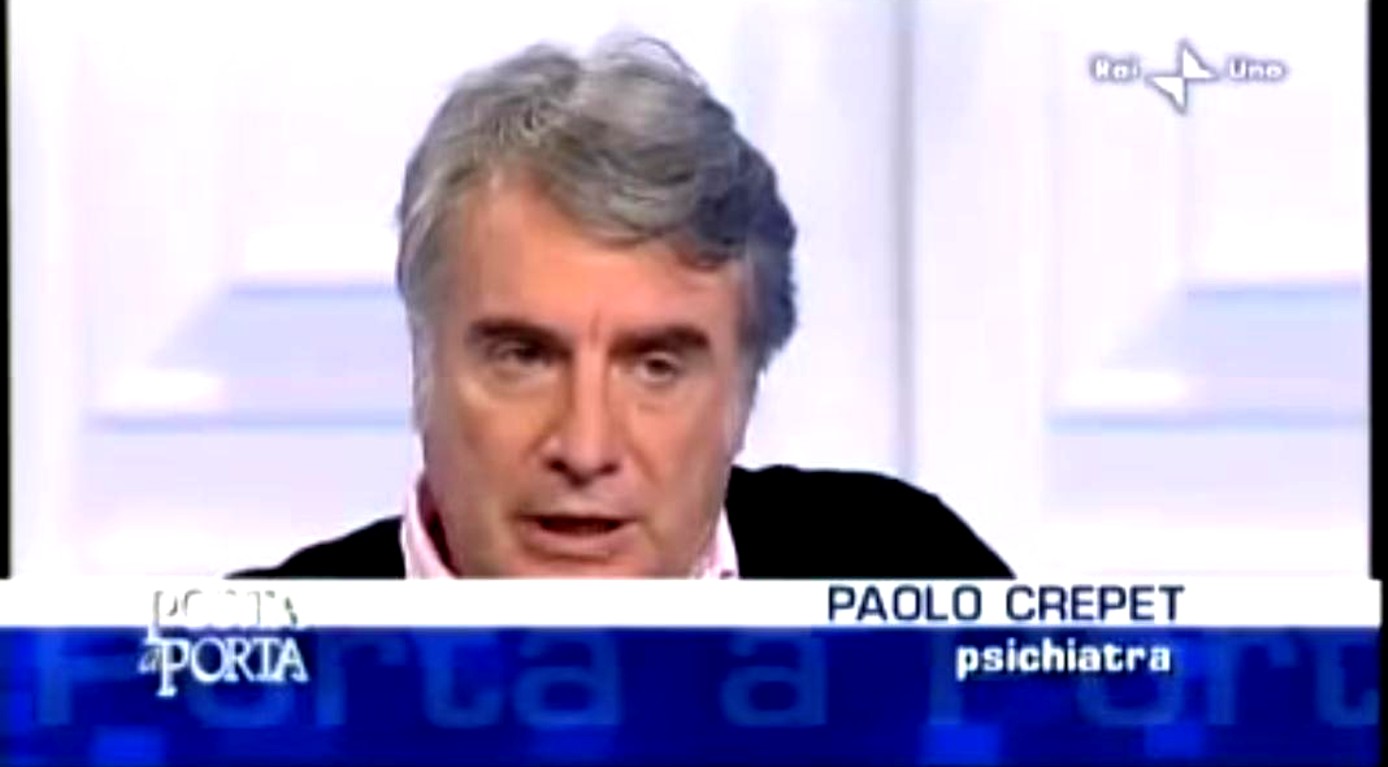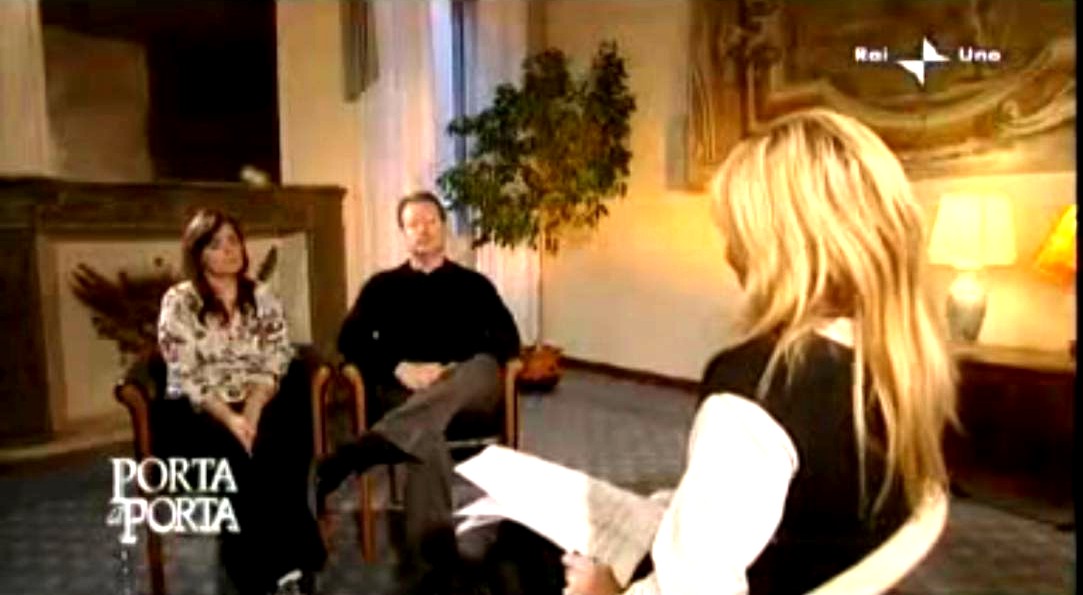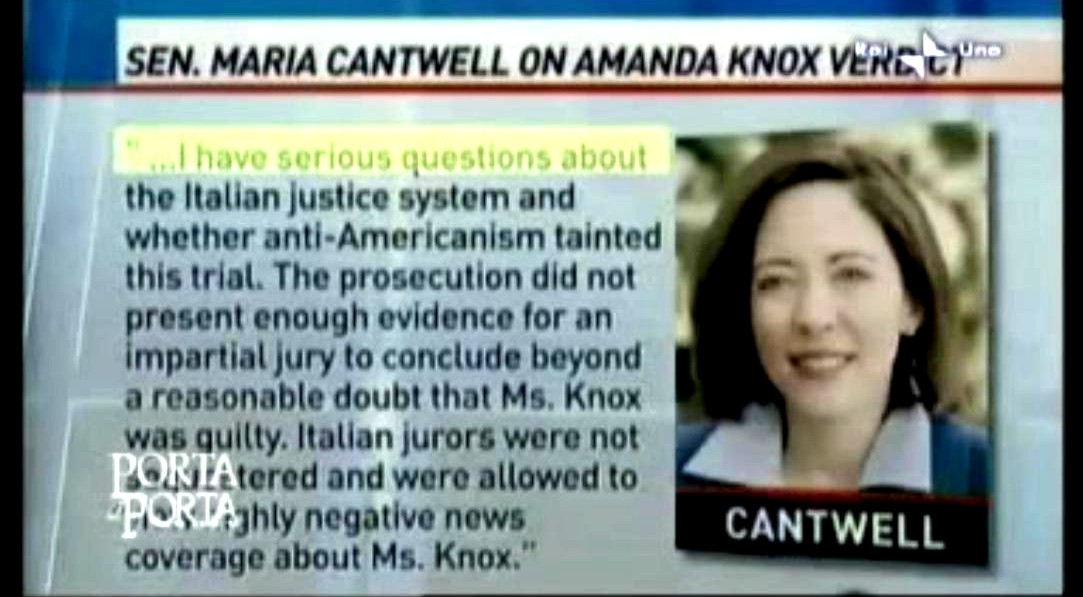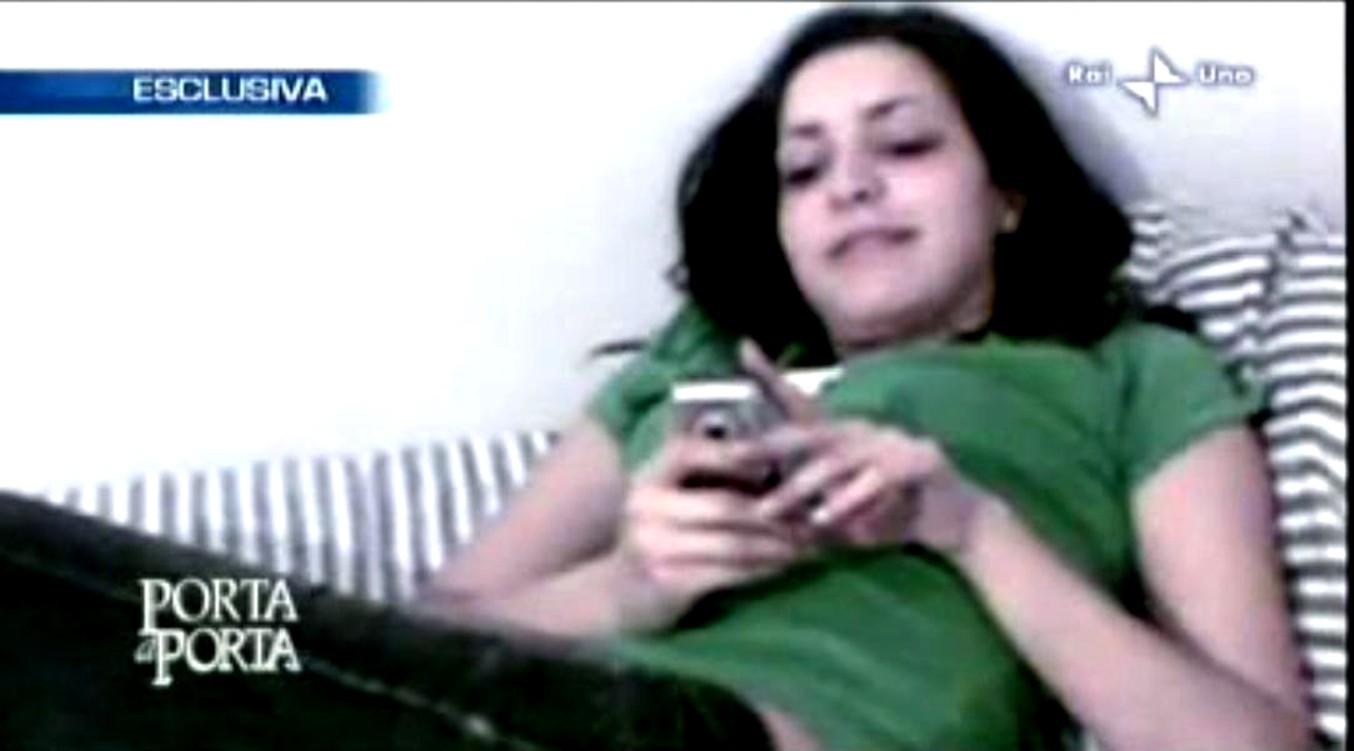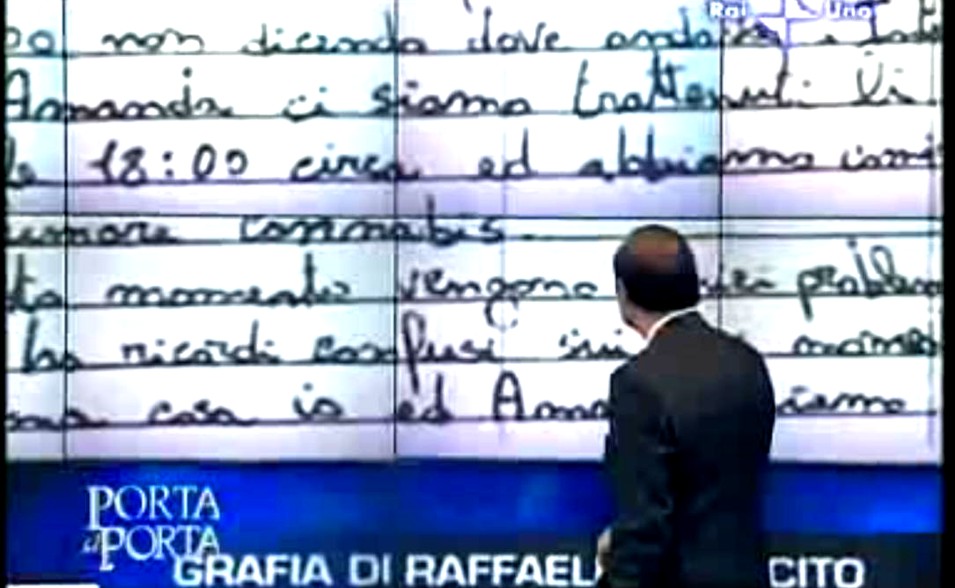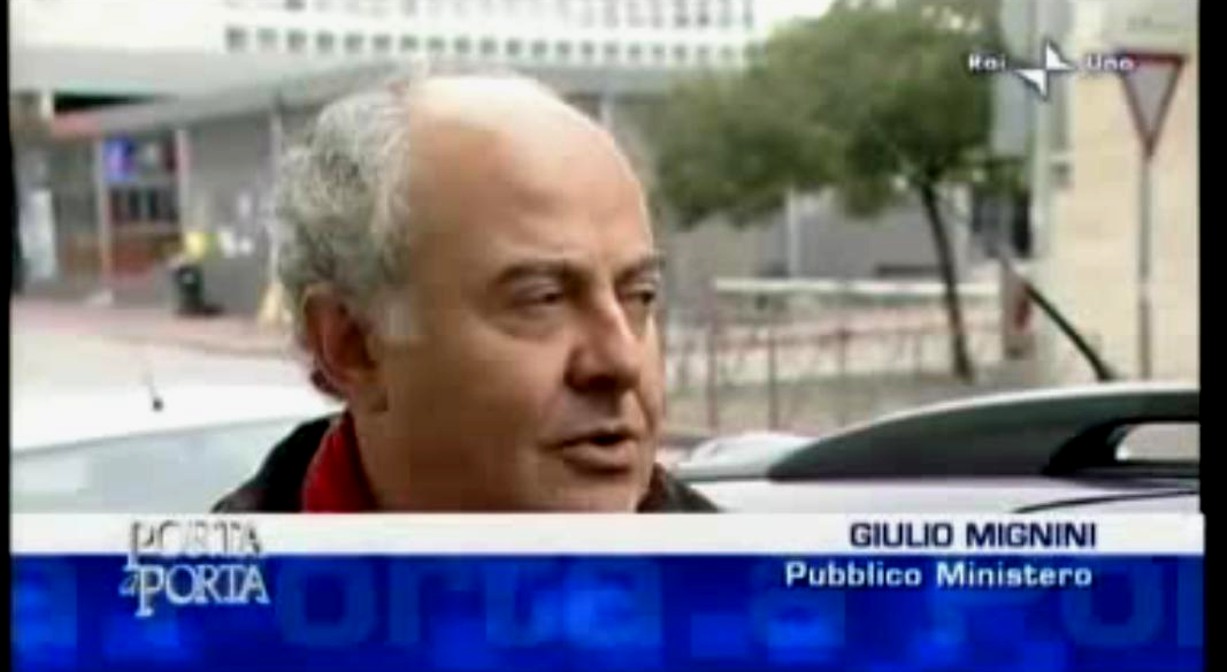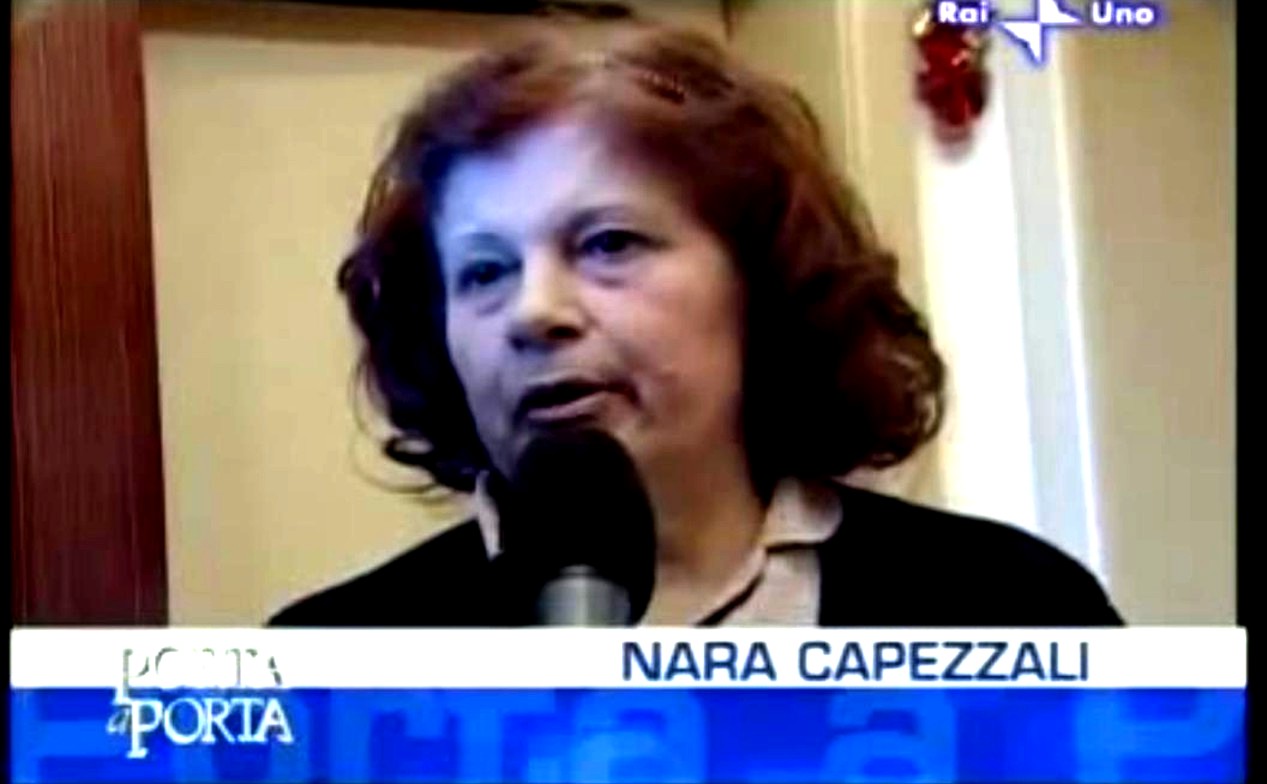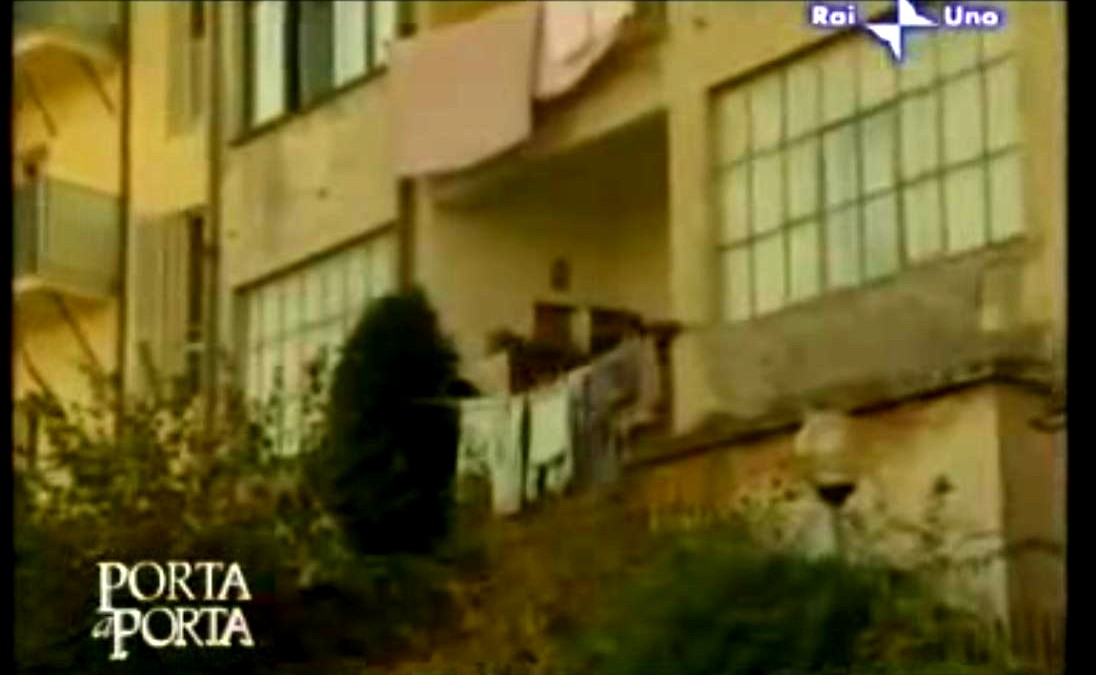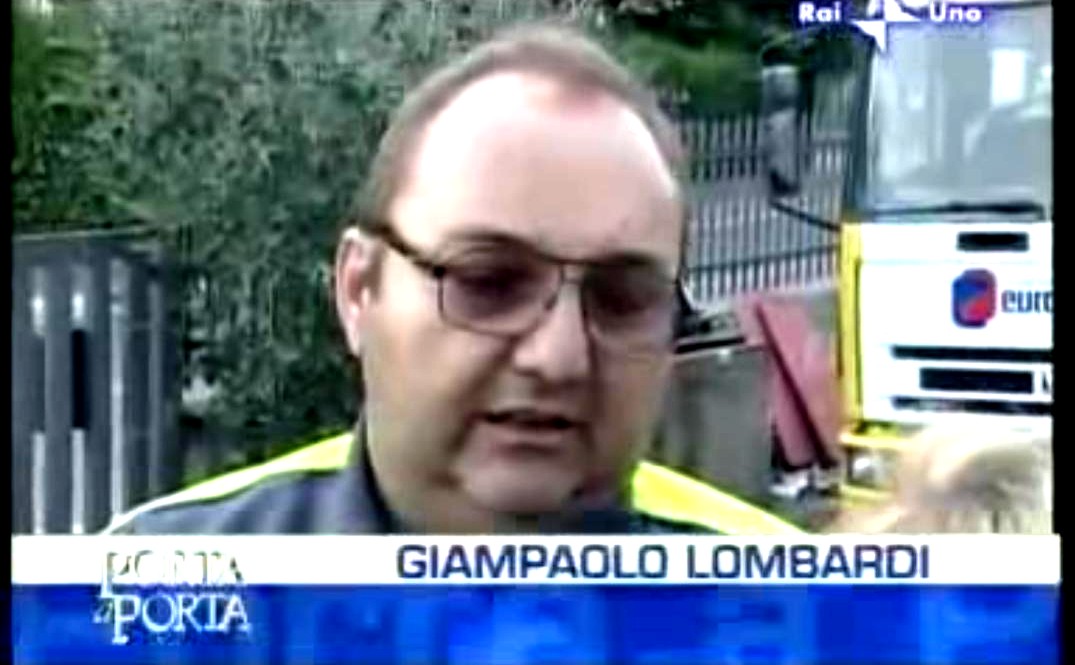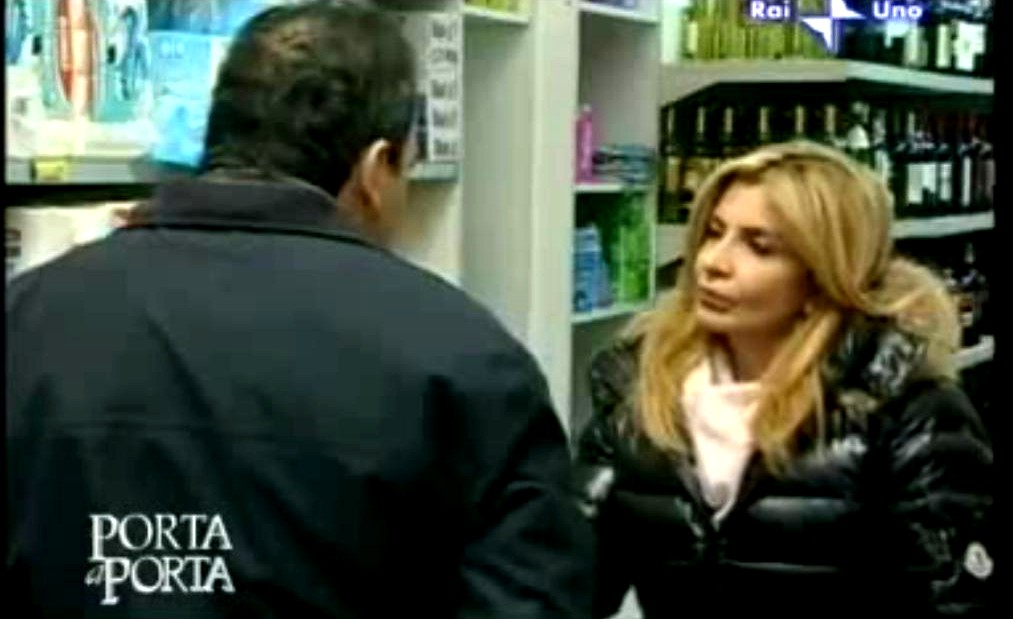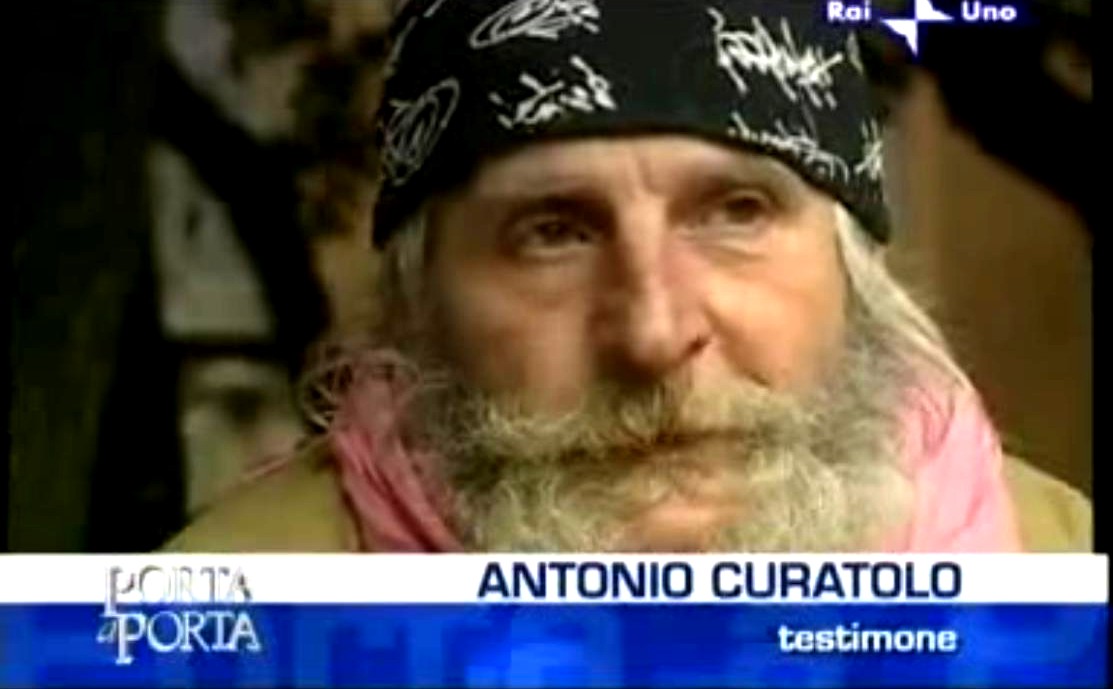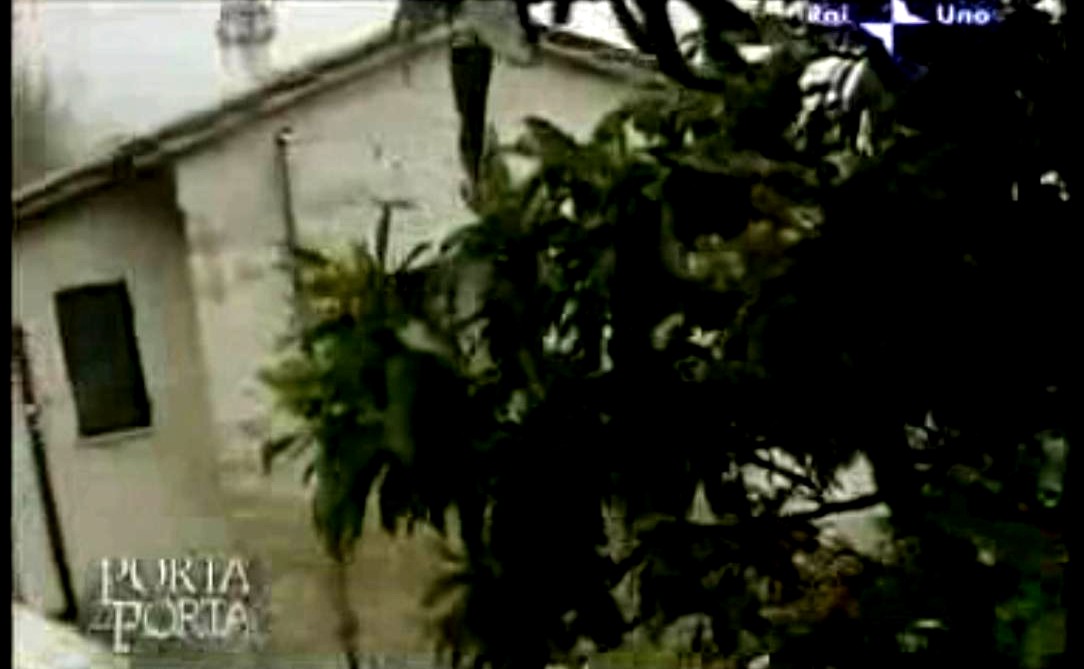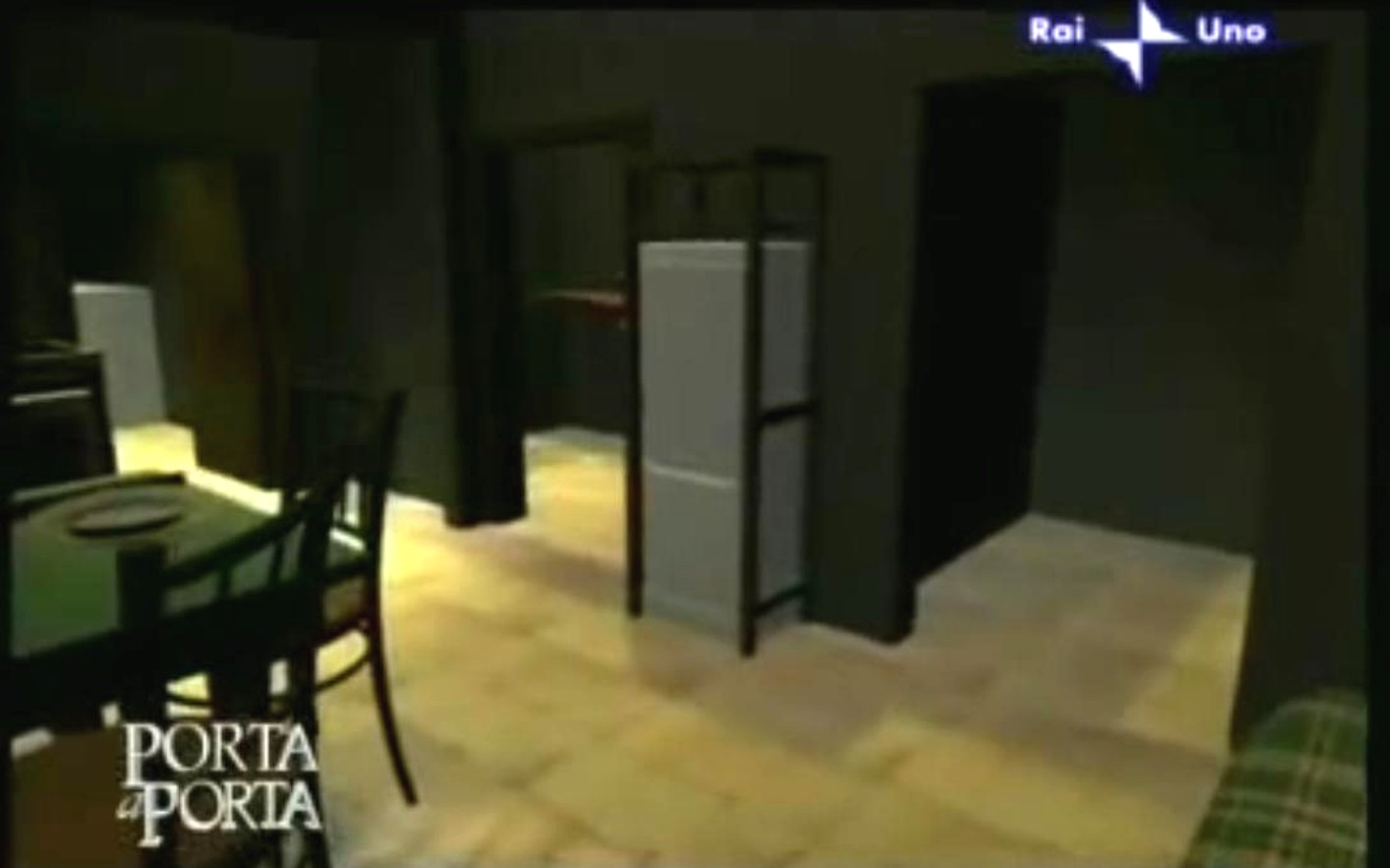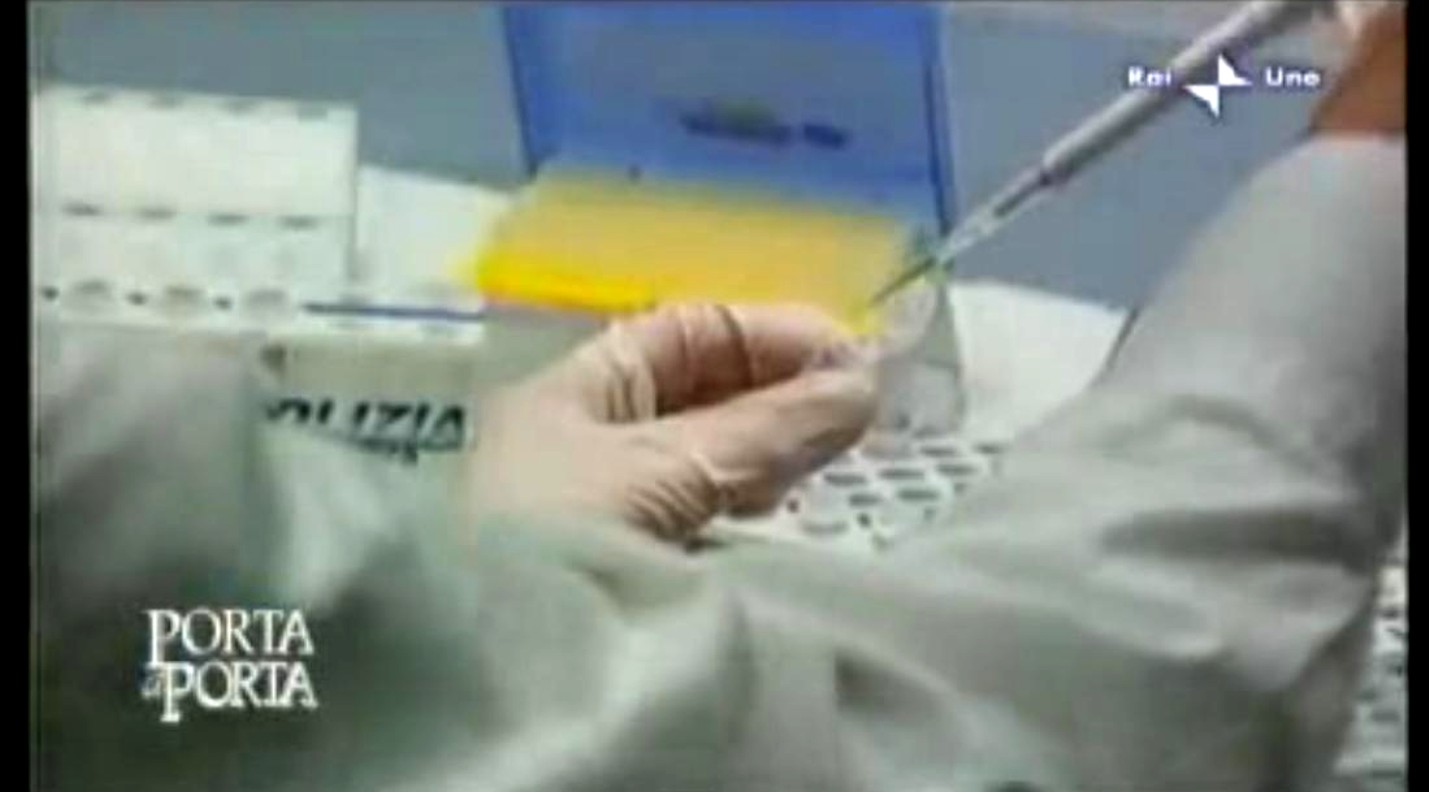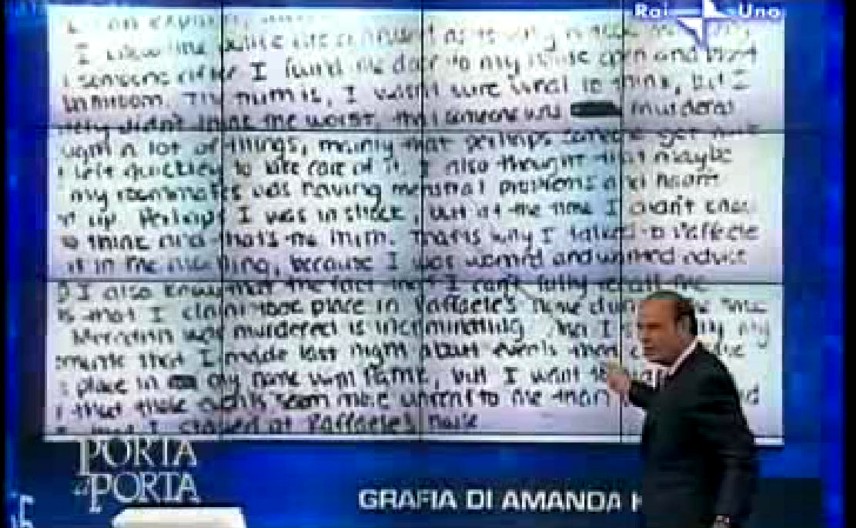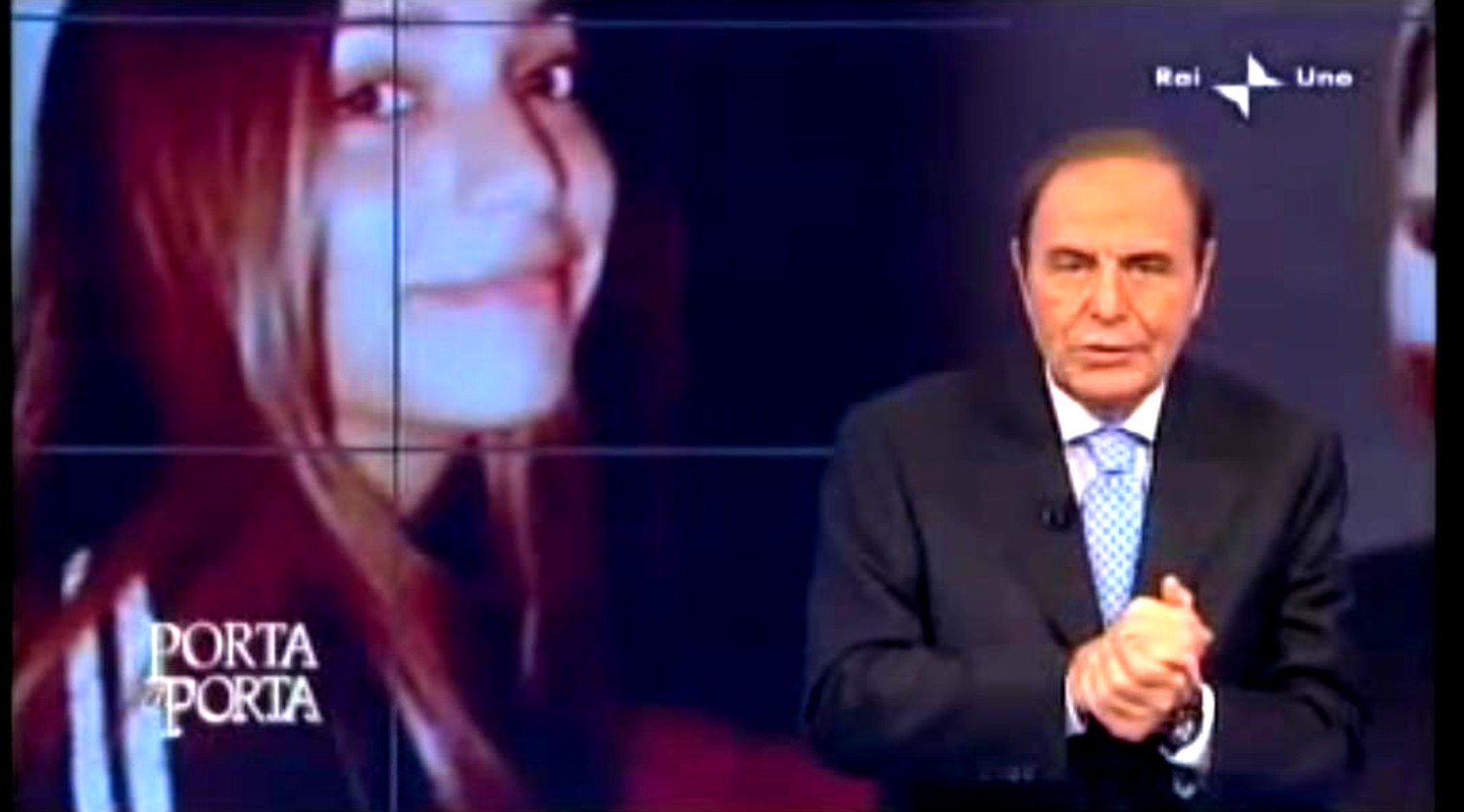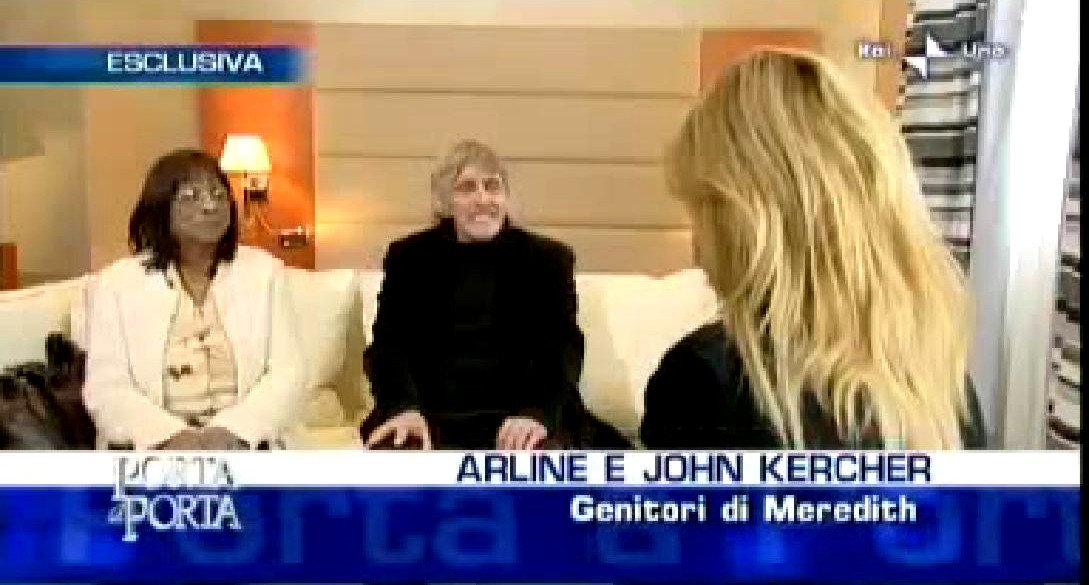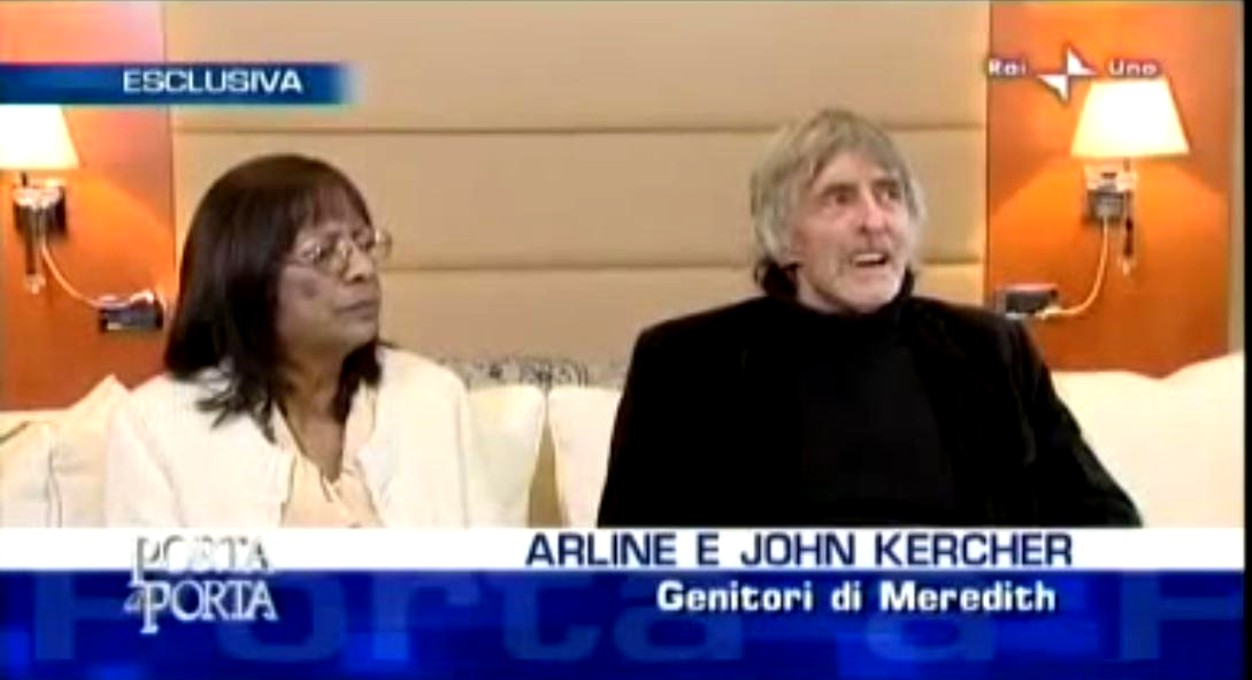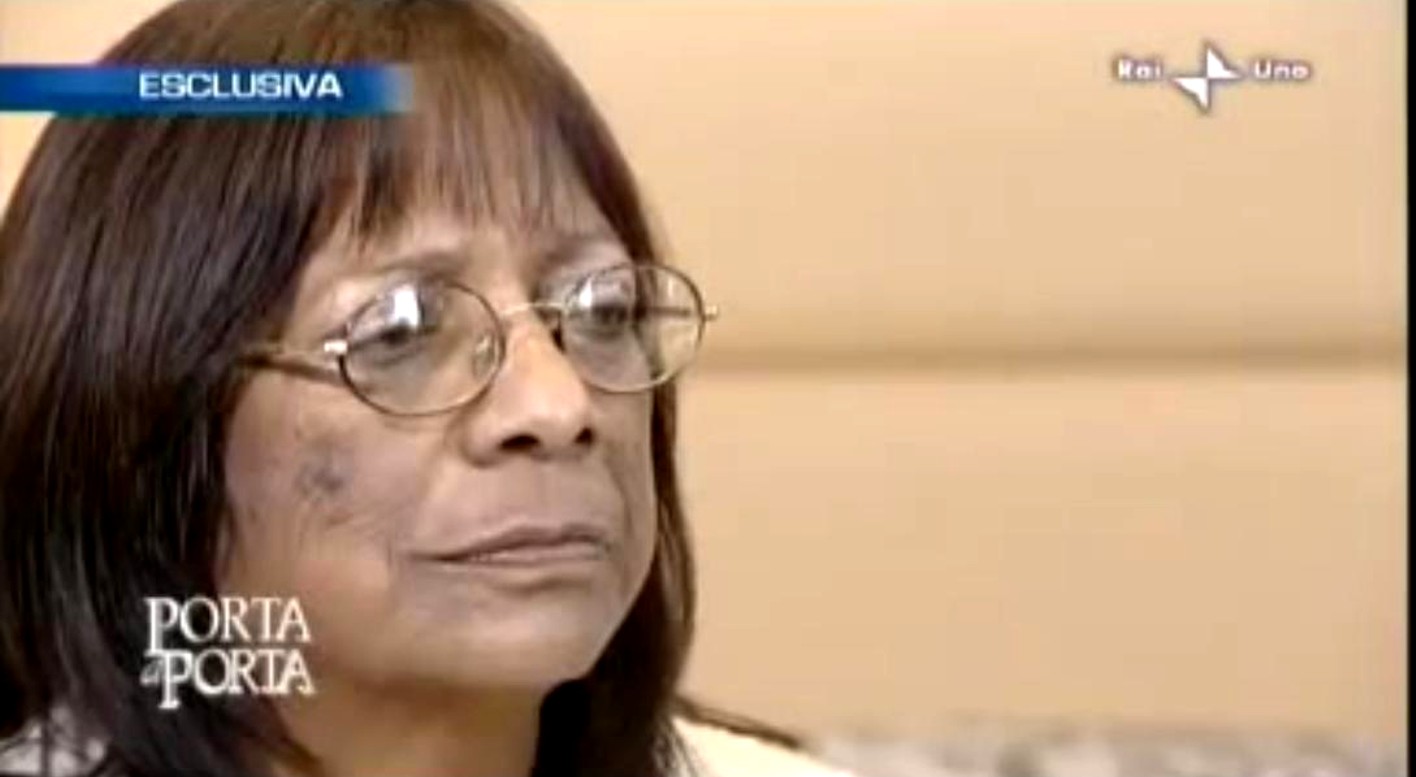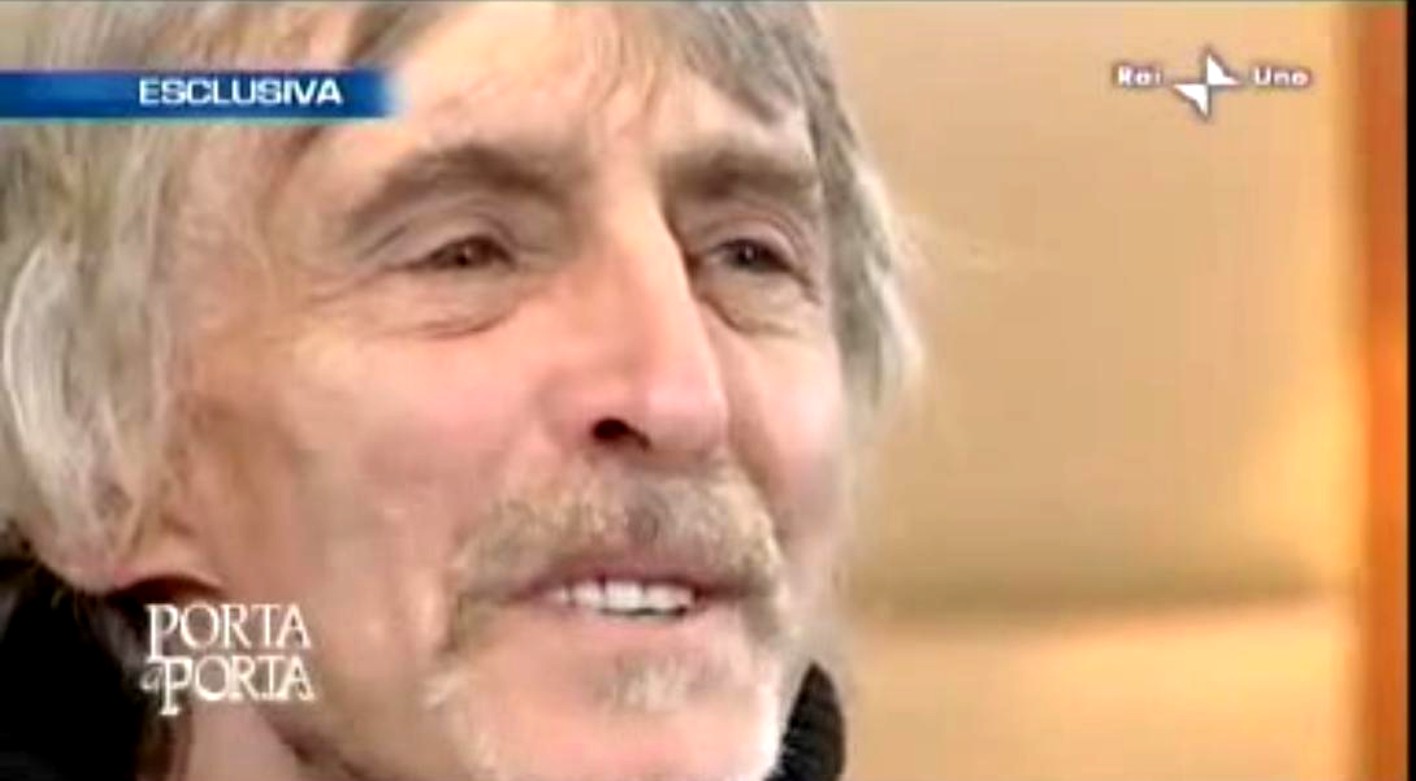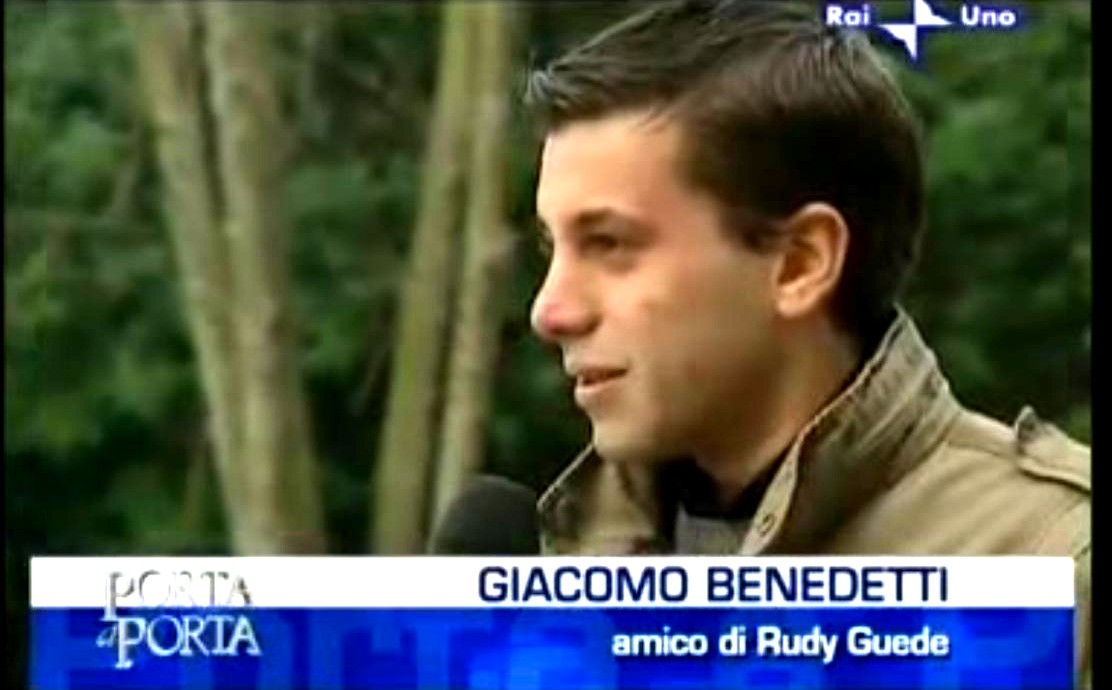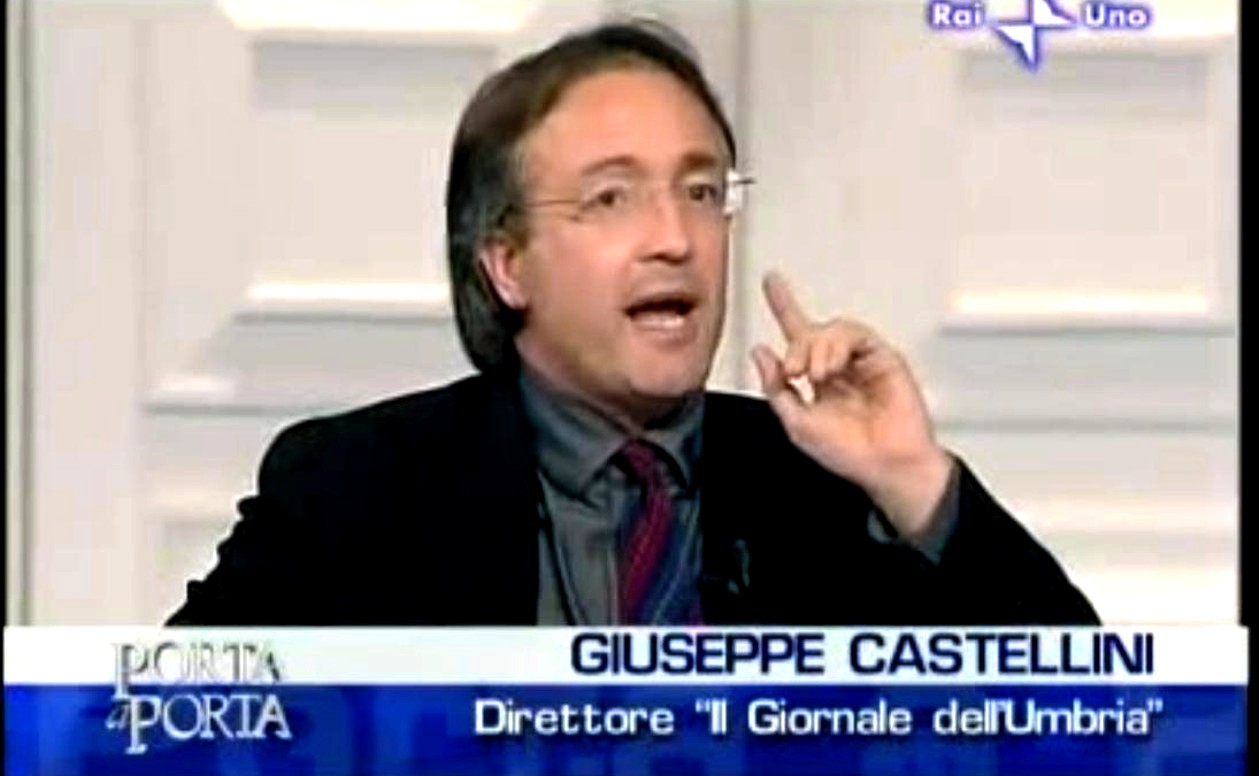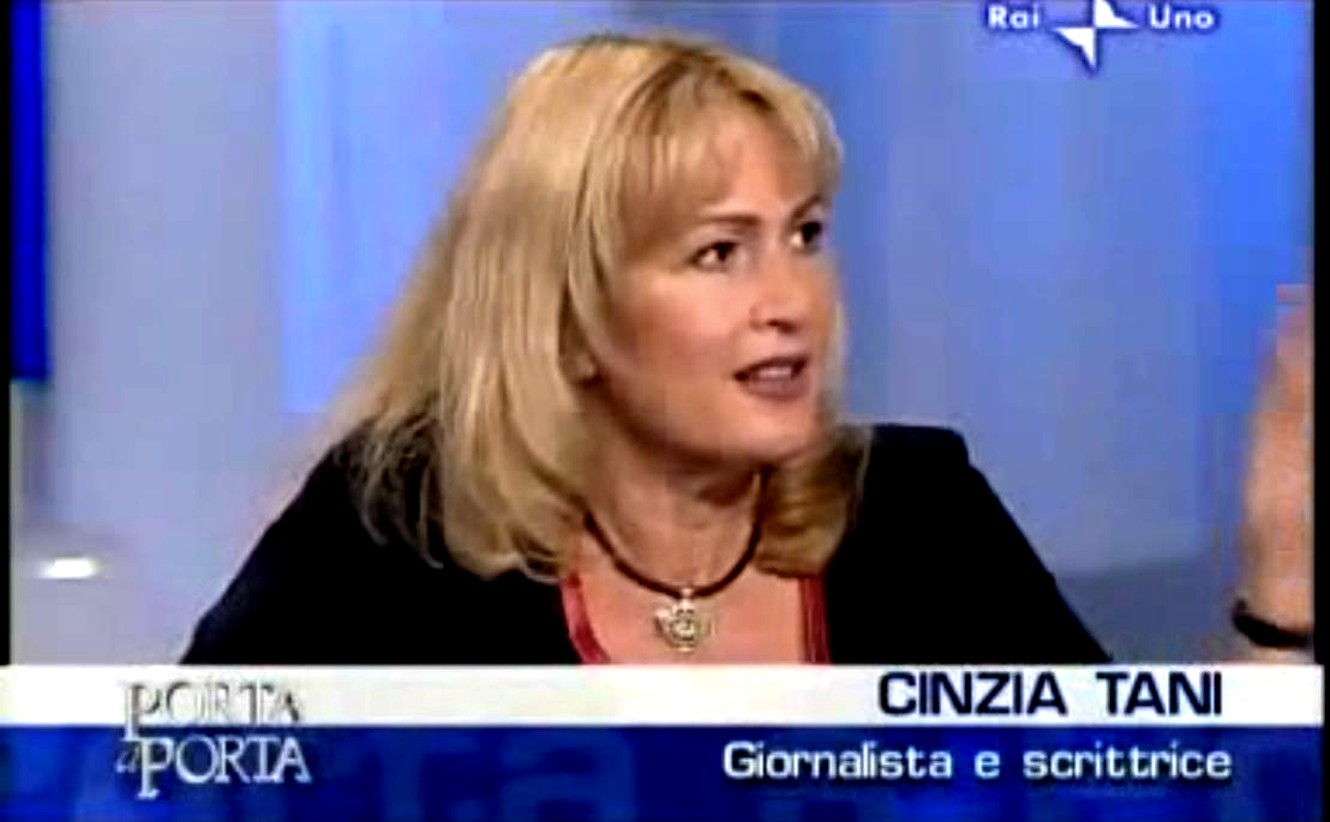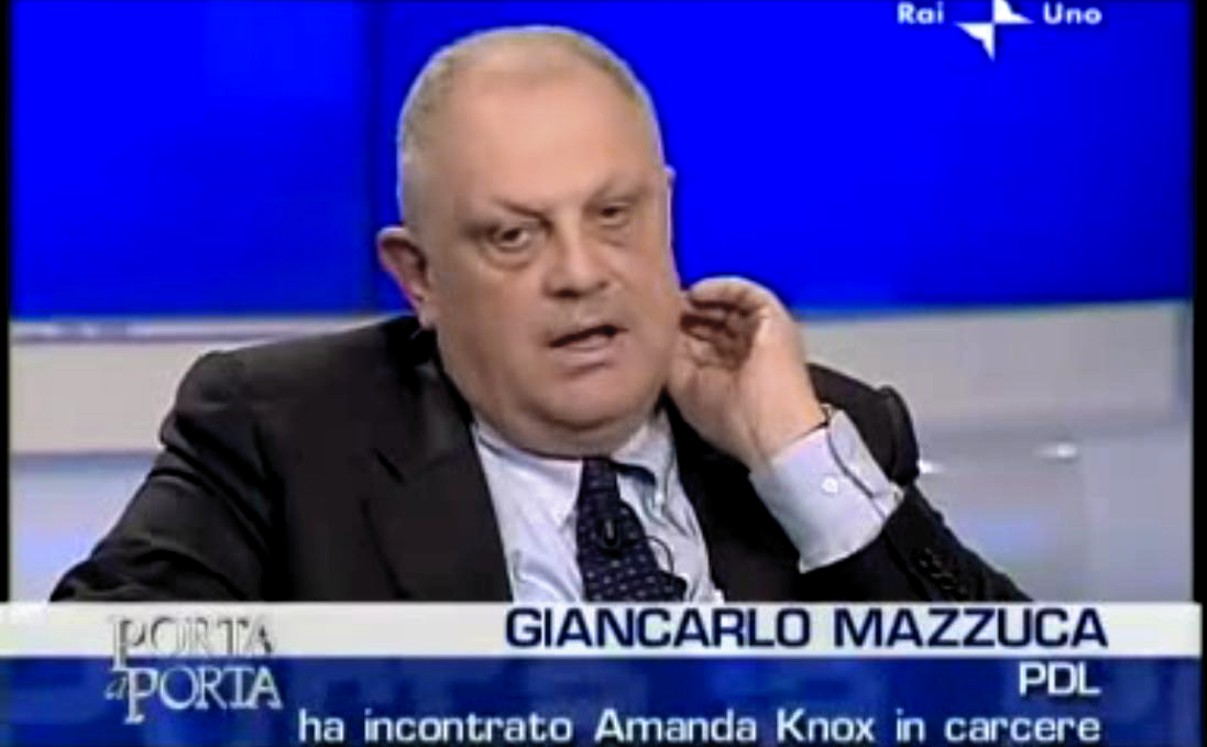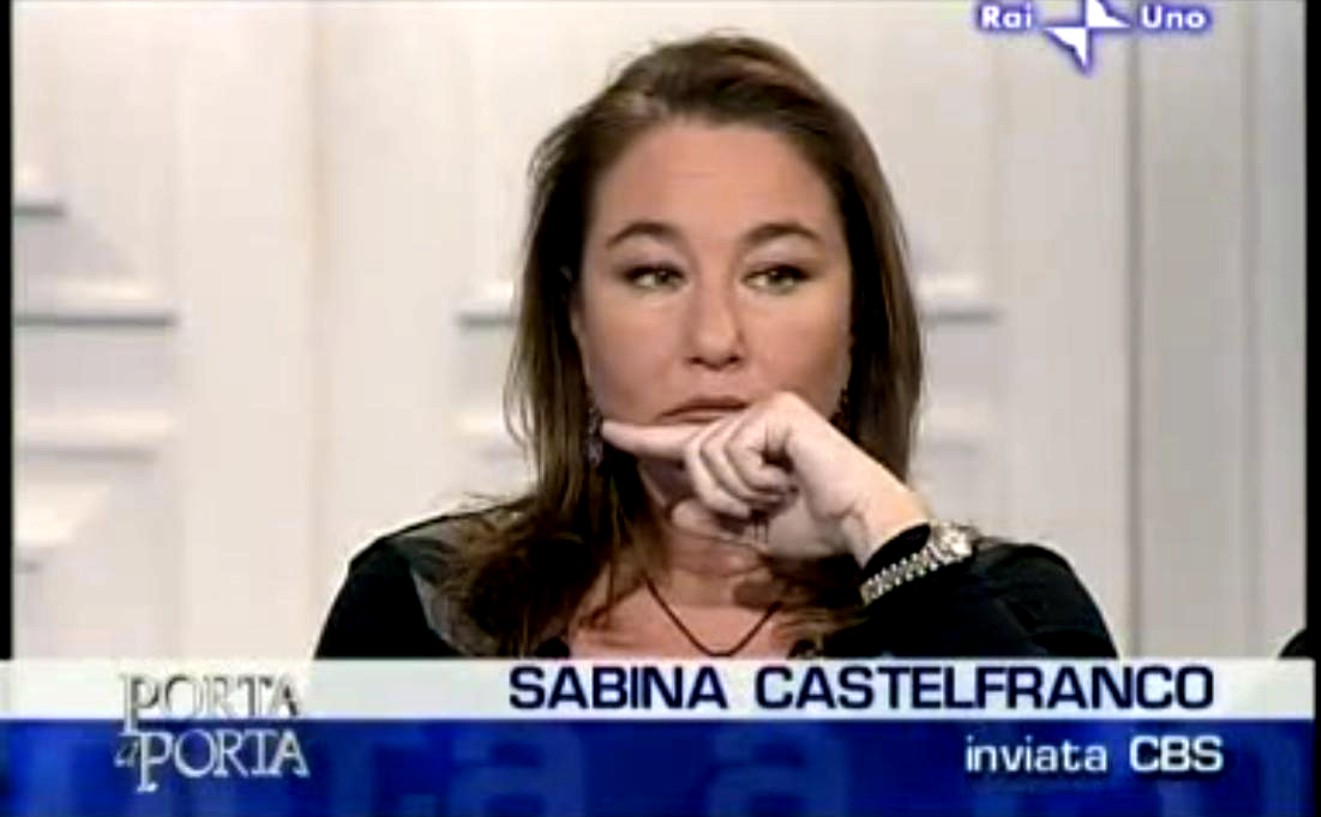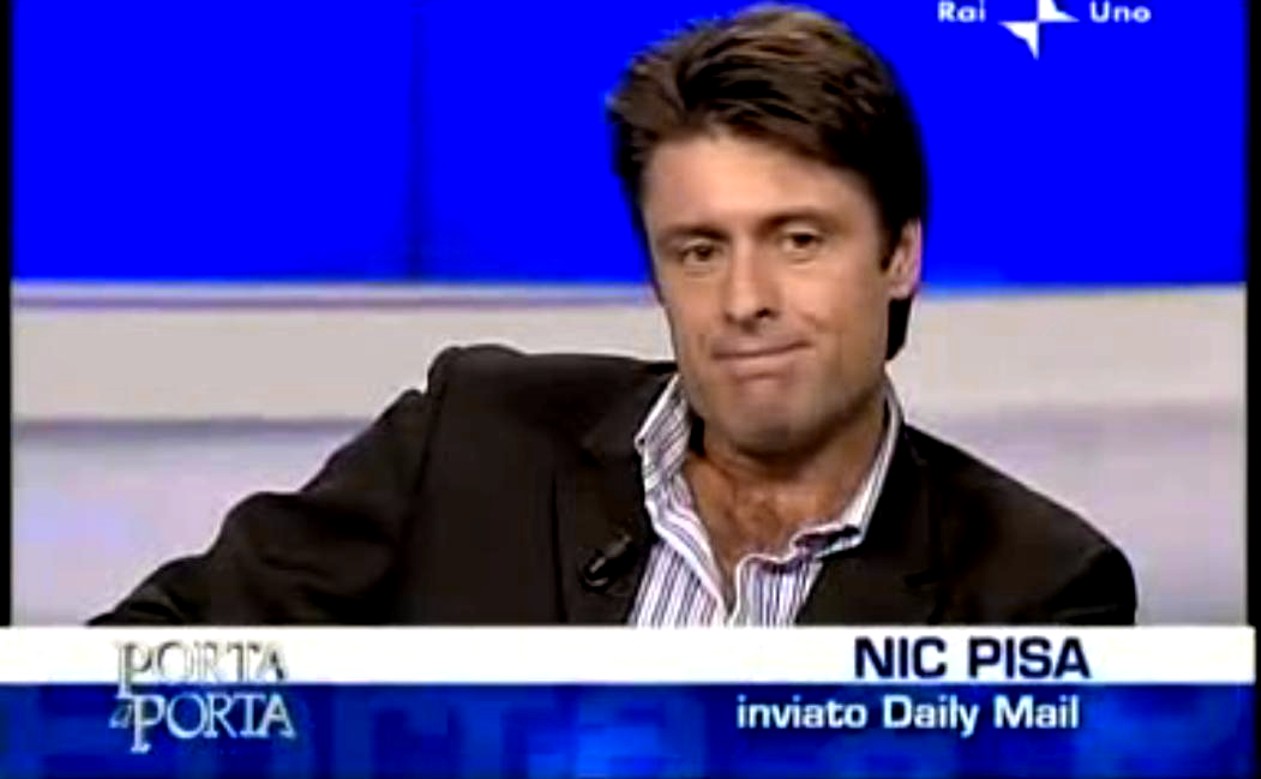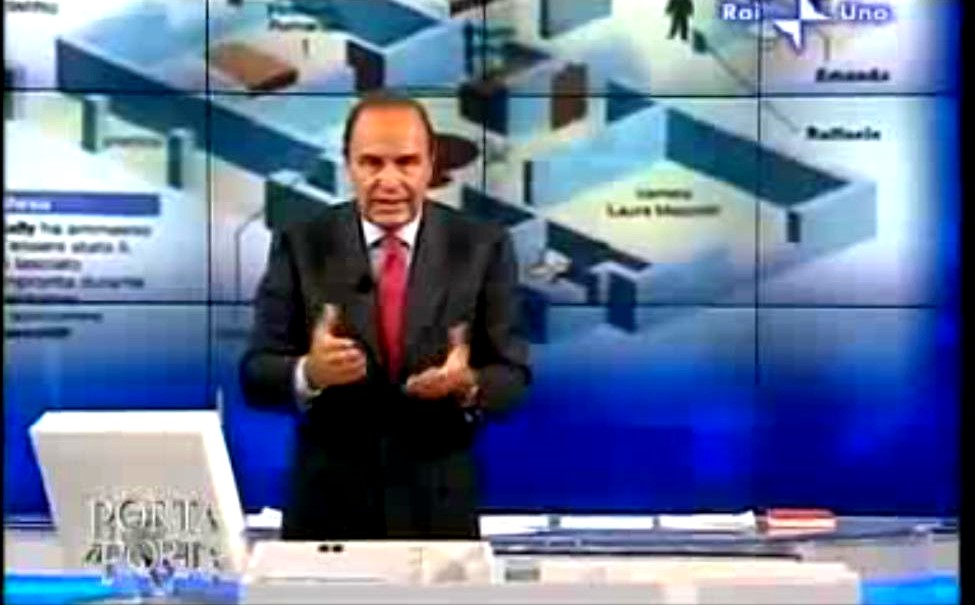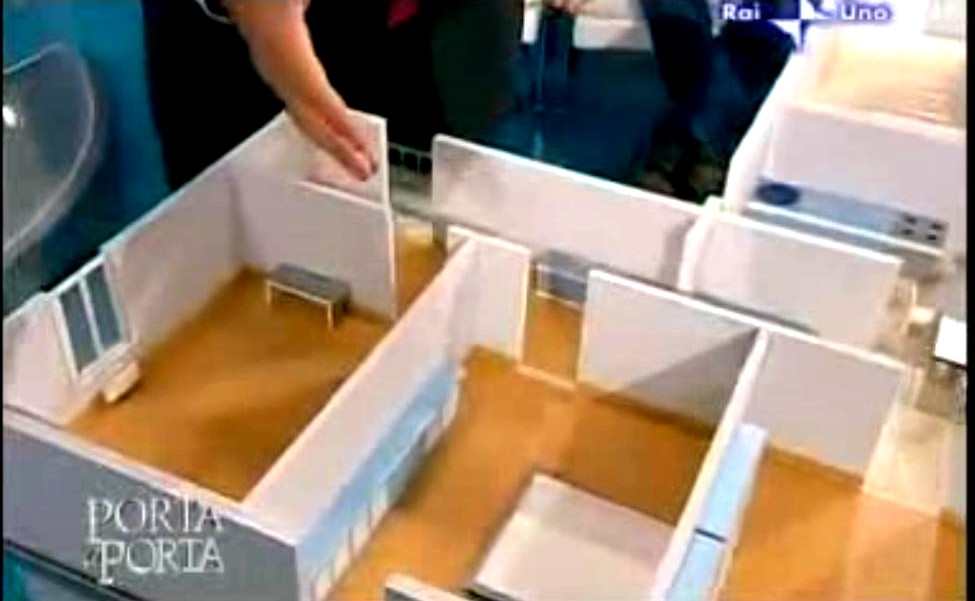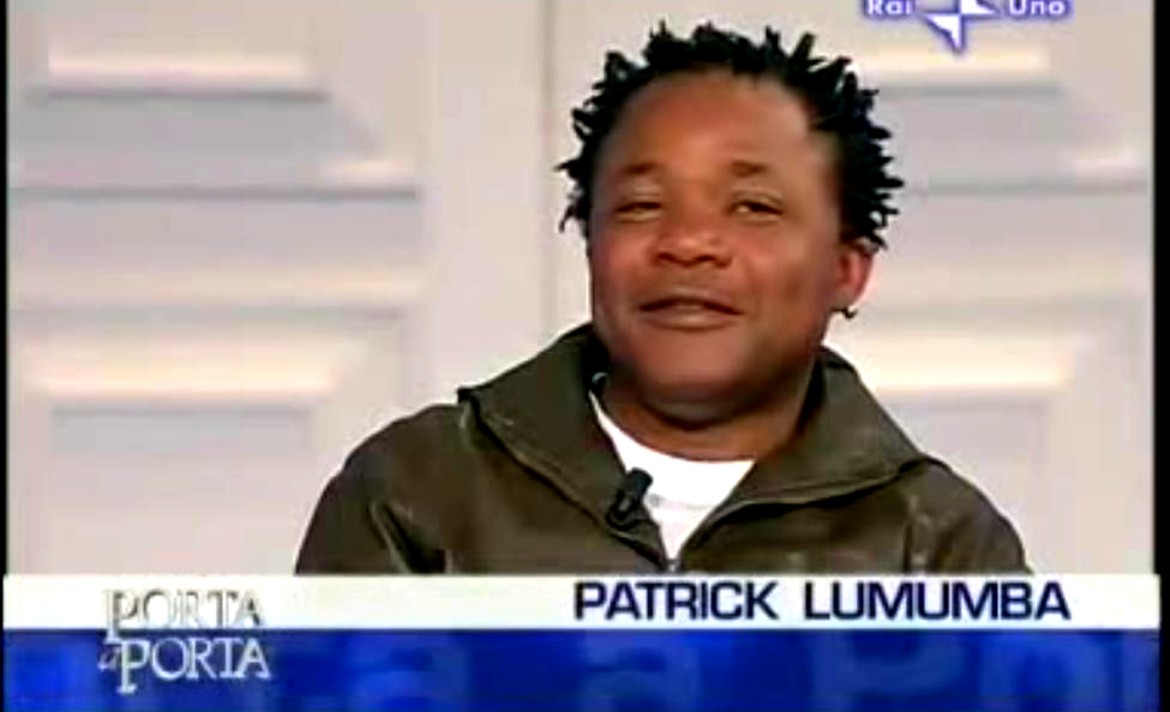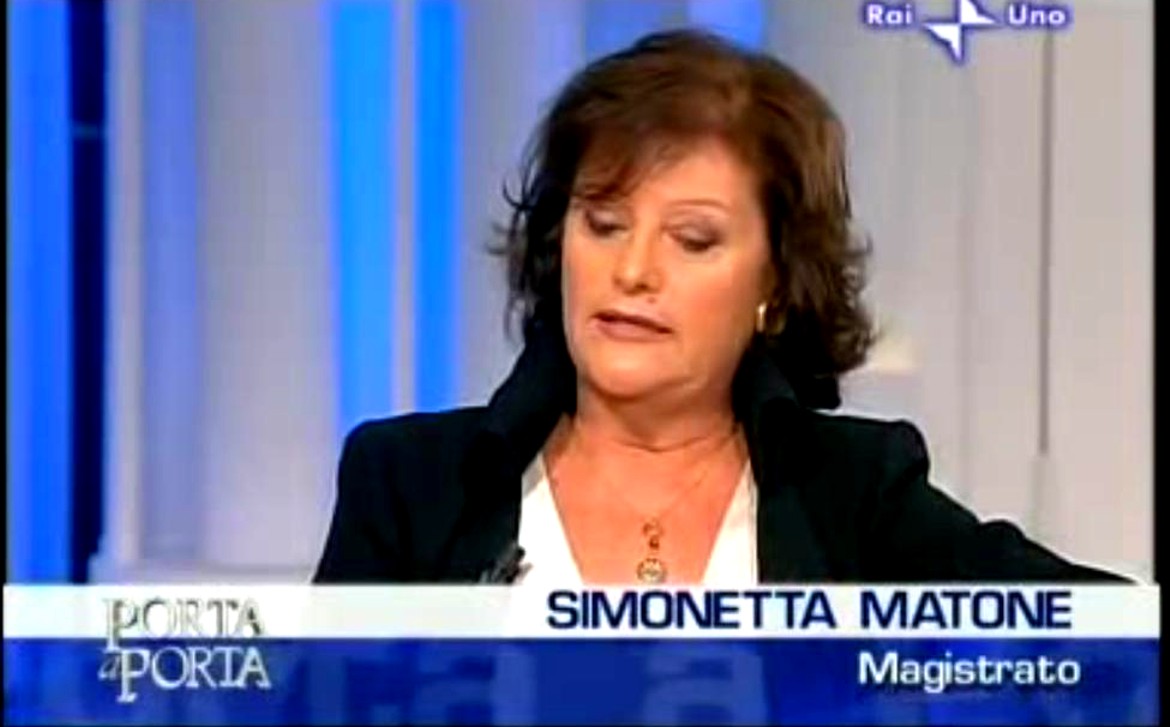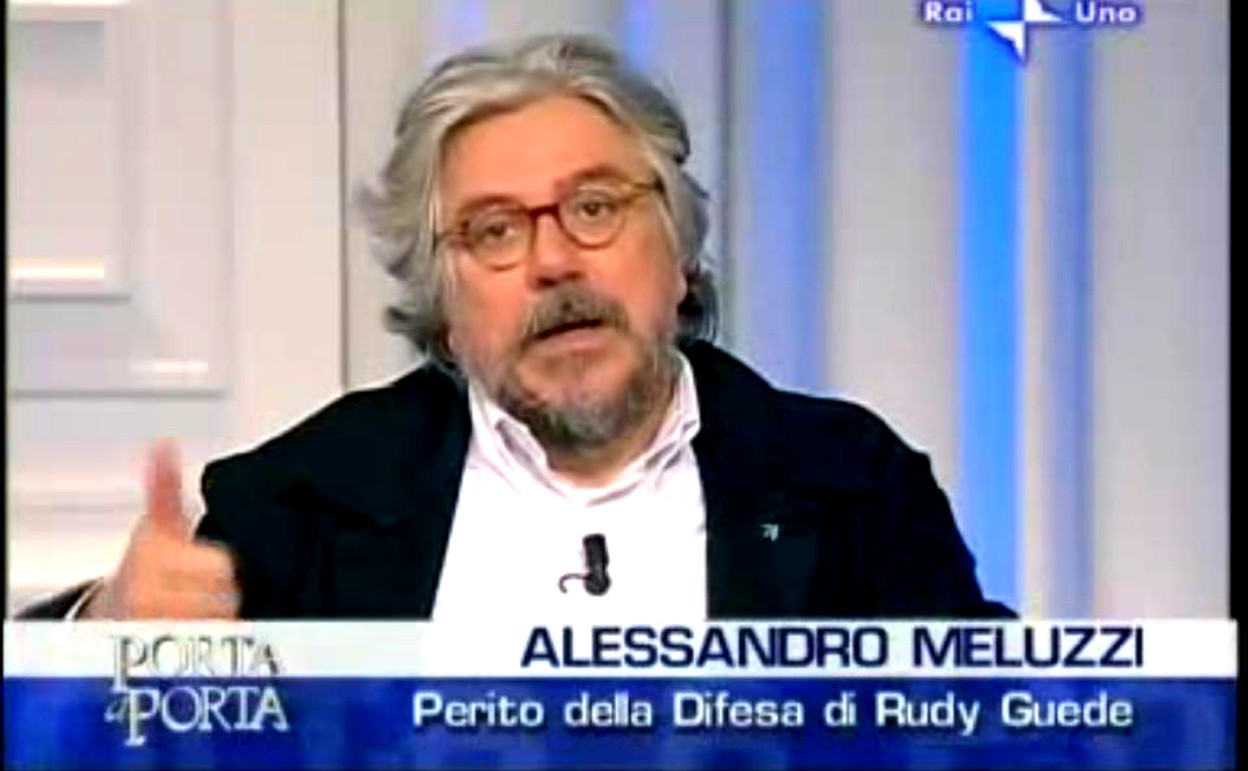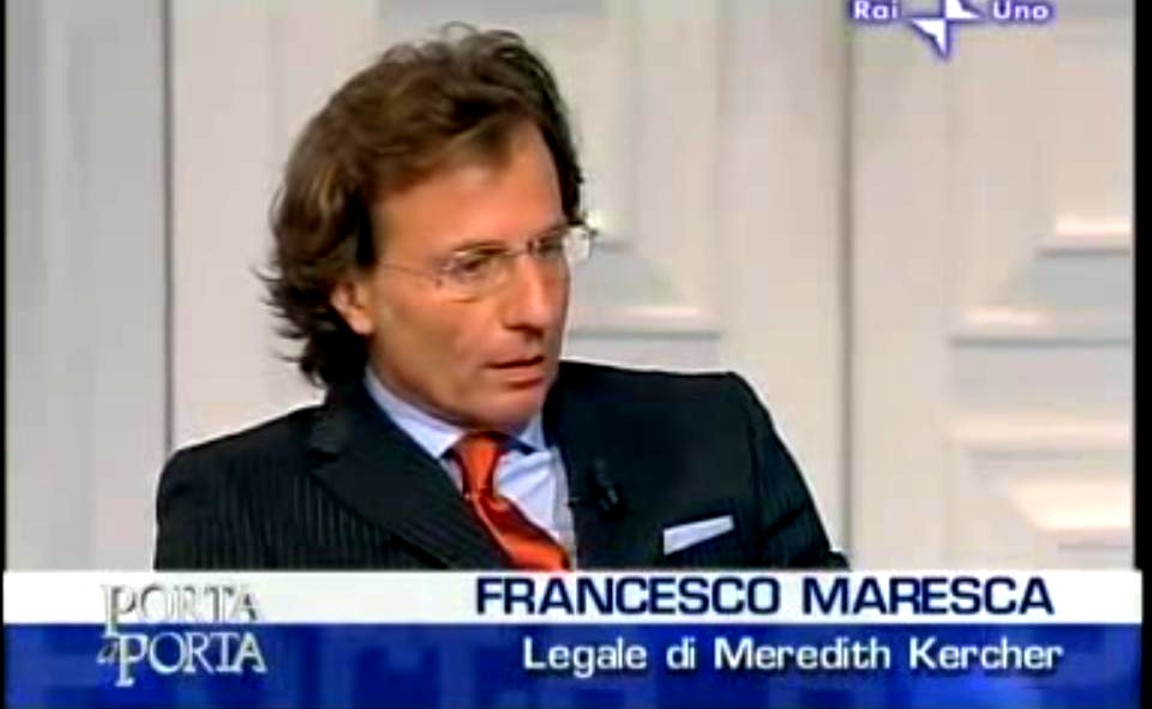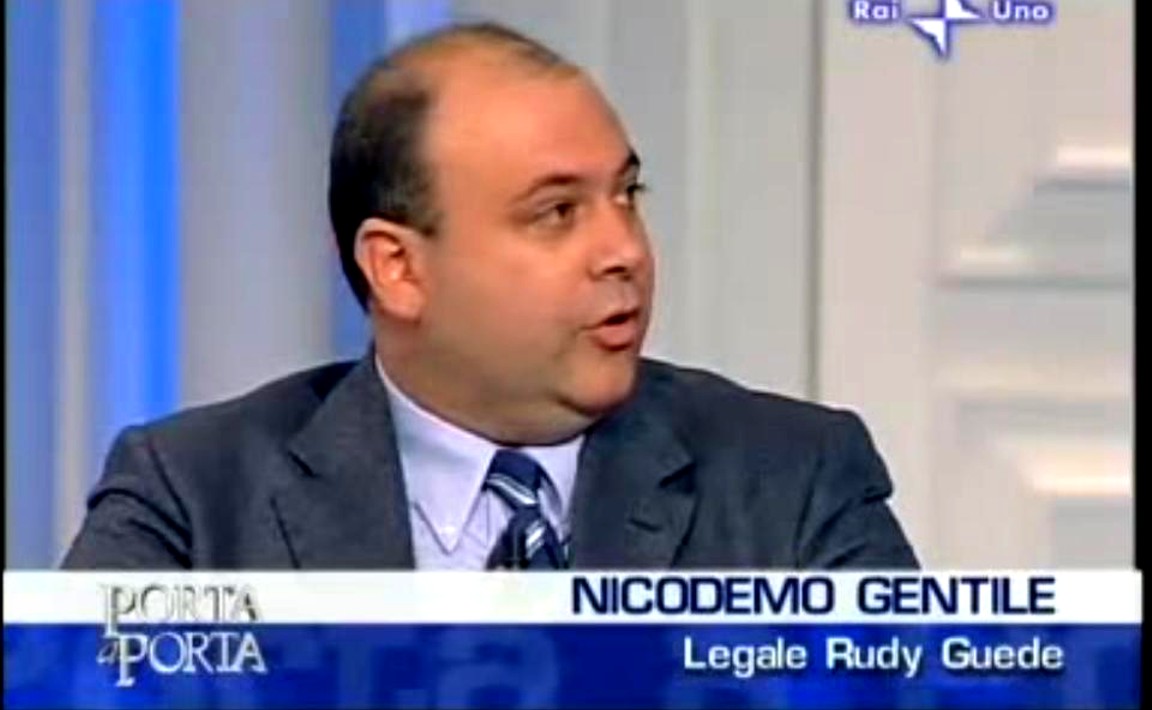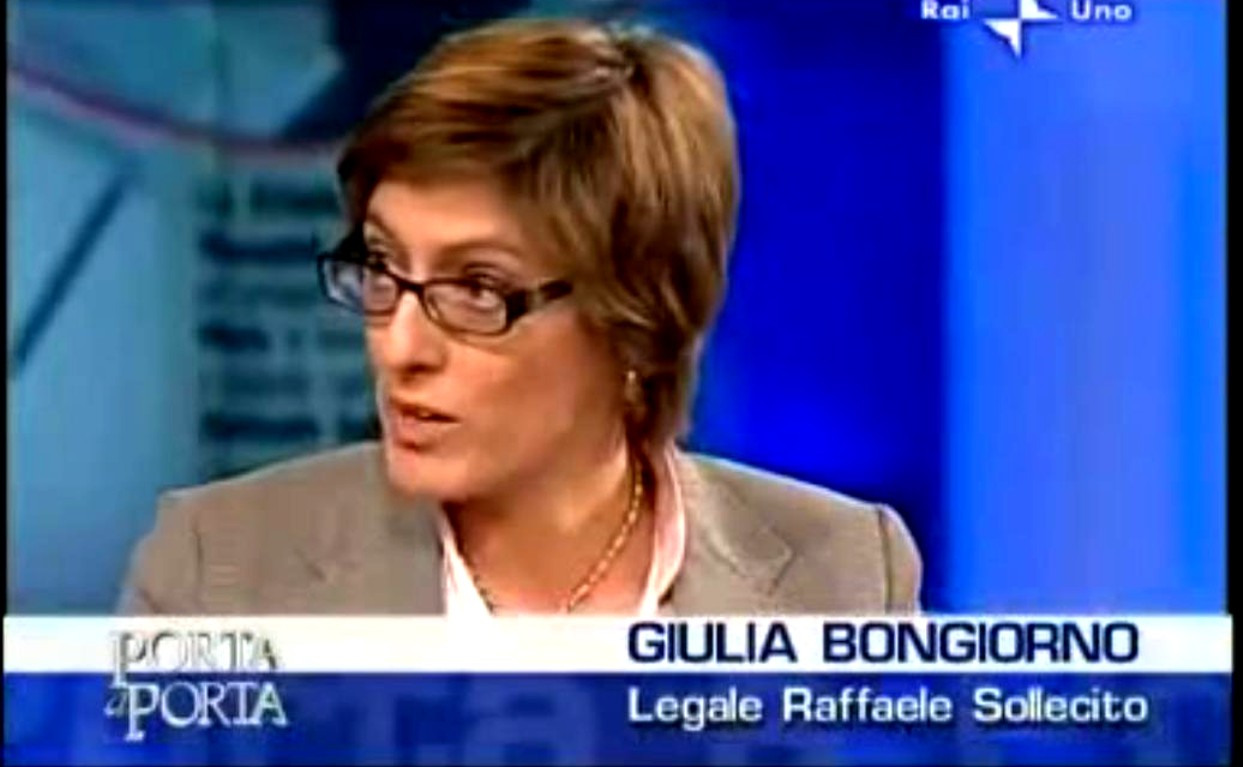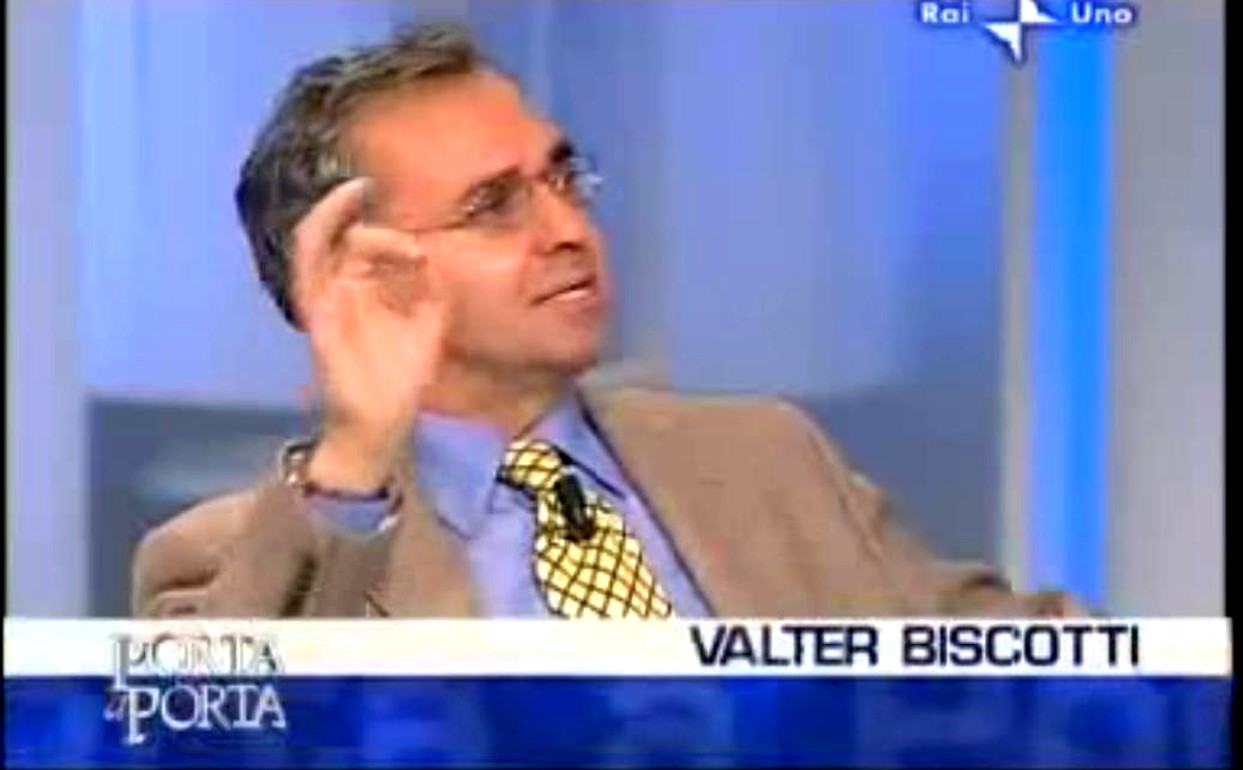
Headsup: Disney's Hulu - mafia tool?! First warning already sent to the Knox series production team about the hoaxes and mafia connections. The Daily Beast's badly duped Grace Harrington calls it "the true story of Knox’s wrongful conviction of the murder of her roommate". Harrington should google "rocco sollecito" for why Italians hesitate to talk freely.
Thursday, June 10, 2010
CNN Report On The Money Transfers That Bankrolled Van Der Sloot’s Trip To Lima
Posted by Peter Quennell
Wednesday, June 02, 2010
Calunnia Claims At The Core Of The Problem For Amanda Knox - And Her Parents
Posted by Peter Quennell
Here is Amanda Knox claiming mistreatment as the reason why she falsely fingered Patrick Lumumba.
This was the court CCTV camera feed to the press-room on 12 June 2009. It was legitimate for the reporters there to capture it.
Our Italy-based Italian-speaking posters Fiori and Nicki both observed that to many or most Italians. Knox’s two days on the stand rang pretty hollow. She apparently needed to come across as a lot more fragile for the claims in the video to ring true.
Yesterday at the first hearing to set the date for Knox’s new trial, the number of police interrogators who are considered to have been targets of calunnia Amanda Knox was stated as twelve.
They will presumably all be testifying both at Knox’s new trial in October, and at the trial of Curt Knox and Edda Mellas, who allegedly repeated Knox’s claims on TV, and for whom the first hearing is coming up on 7 July.
They could face prison time and/or fines.
Judge Claudia Matteini observed that her presiding over the early hearings into Meredith’s case in 2008 (and denying Knox house arrest, a denial believed based in part on a psychological profile never made public) was not automatically a reason for her being replaced as a judge in this new case.
Knox had not made the claims you can see in the video at the time Judge Matteini was presiding. However, she agreed with what seems a reasonable defense request that a higher court should take the question of a possible conflict of interest under review.
She stated that the appeals court will issue a decision on who should be the judge for the new trial on 17 June.
Tuesday, June 01, 2010
Knox Hearing On Calunnia Charges Technicality, Then Trial Set To Be Under Way June 16
Posted by Peter Quennell
Nick Squires in Rome for the Daily Telegraph has the report which includes this.
Knox’s lawyer, Luciano Ghirga, argued that it was inappropriate for the slander charge to be heard by judge Claudia Matteini, because she had been involved in one of the preliminary hearings into the Kercher murder.
The case on Tuesday was adjourned until June 17, when another judge is likely to be assigned to the case. The trial is likely to start on October 1. Her appeal is also expected to start in the autumn, meaning that the two cases could run concurrently.
If Knox is found guilty of slander, she could face another six years in jail, on top of the 26 years she is currently serving.
And Knox could face MORE time than 26 plus six years if the prosecution wins it on appeal. Possibly a total of forty.
So much for the PR campaign and the ongoing misinterpretation of the evidence and sliming of the prosecution by the “pro-Knox” websites. Guede of course ran no campaign, his lawyers and friends were always respectful, he took the short-form trial (an admission of some kind of guilt), and he tried some sort of apology to Meredith’s family.
And after his first appeal he emerged with only 16 years.
Sunday, May 30, 2010
Questions For Knox And Sollecito: Ten From Daily Beast As Knox Calunnia #2 Trial Starts
Posted by Peter Quennell
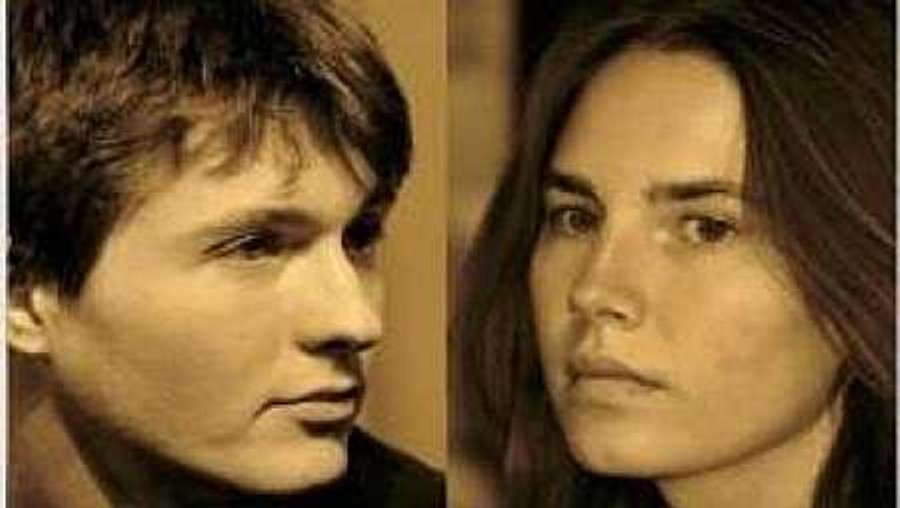
This Daily Beast report indicates that the cancelled jailhouse TV interview with Amanda Knox was a lot more firmed-up than Knox’s stepfather, Chris Mellas, seems to have claimed.
And it outlines the first phase of Knox’s Calunnia #2 trial which is based on charges brought by the interrogating police, all of whom testified at her trial that she was treated well during her interrogations as a witness and suspect. .
Click the image or link above above for the fine reporter Barbie Nadeau’s full article on some issues Knox has never been able to account for, including Knox’s callous skipping of Meredith’s memorial service.
The ten questions are all very tough, and each would also have been asked by the jury. Here they are:
.:
It’s back to court for Amanda Knox, the 22-year-old Seattle native currently serving 26 years in prison in Italy for sexually assaulting and murdering her British roommate, Meredith Kercher.
This week, Knox is expected to attend a preliminary hearing on slander charges lodged against her for accusing Perugia police of abuse. During her testimony at her murder trial last June, she accused the cops of slapping her on the back of the head during an interrogation just days after Kercher’s body was discovered in November 2007.
The police deny hitting her, and Knox’s own lawyers have never filed charges for the alleged abuse. If she is convicted of slander, a judge could add six years to her sentence….
Knox’s resurgence in the headlines was to coincide with a joint jailhouse interview she had granted to ABC News and the Italian broadcaster Mediaset’s Matrix program. But the bureau of prisons denied the interview in the final hour, effectively silencing Knox indefinitely.
A high-profile jailhouse interview with Knox is considered the Holy Grail by journalists covering the case, and the American and Italian networks have been vying for a chance to ask Knox a few questions on camera. Now it is unlikely anyone will get an interview before Knox’s appeal hearings this fall.
But if we did, there are a few questions we’d want her to put to rest.
1. Why did you and Raffaele Sollecito turn off your cell phones at the same time the night of November 1, 2007 and on again at the same time the next morning? You told the police that you and Raffaele slept late the morning of November 2, 2007, but phone records show that you both turned your phones back on very early that morning. How could that be?
2. Why were you bleeding? Your lawyers agree with the prosecution’s findings that at least one of the spots of Meredith’s blood found in the house where she was killed had your blood mixed with it. Your mother told me that you had your period. Your stepfather told others that your ear piercings were infected. Which was it?
3. Once you realized your mistake in blaming Patrick Lumumba for Meredith’s murder, why didn’t you tell the authorities? You told your mother that you felt bad about it, so why didn’t you alert an official so Patrick could be set free?
4. Why did you go with Raffaele to the police station on November 5? You were not called in for questioning. Did you realize at that time that you were both under suspicion?
5. Why weren’t your and Raffaele’s fingerprints found in your house after the murder if the two of you had spent time there that morning and the day before? Only one half-print on a glass in the kitchen has been attributed to you, yet you have claimed that you took a shower there that morning. How did you spend so much time there and leave virtually no trace?
6. Why did you take the mop and bucket from your house over to Raffaele’s house? You told the prosecutor during your testimony in June 2009 that you took the mop and bucket to his house to clean up a leak under his kitchen sink. But by your own testimony, the leak was miniscule and could have been easily cleaned up without it. What were you really doing with the mop?
7. What would you do differently if you had a chance to rewind the clock back to November 3, 2007? Would you go to the memorial service for Meredith? Would you still have gone to the police station with Raffaele? Would you have left for Germany when your aunt asked you to?
8. What do you think happened the night Meredith was killed? You have professed your innocence. Who do you think killed her and under what circumstances?
9. What do you really think of the Italian justice system? You told an Italian parliamentarian that you got a fair trial, and you even thanked the prosecutors for trying to solve the mystery of Meredith’s death, but your supporters at home in Seattle maintain that the Italian system is corrupt and unfair. What is your real view?
10. Is there anything you wish you would have said in court during your trial? You talked about your vibrator and about how you did not want an assassin’s mask forced on you. But in your final appeal after the closing arguments on December 4, 2010, why didn’t you say the words, “I did not kill Meredith Kercher?” Raffaele did when it was his turn to speak. Why didn’t you?
Our posting soon of the judges’ sentencing report will open up dozens of new questions for Knox. Such as: “How did you track Meredith’s blood into your own room and leave three traces revealed by luminol?”
Friday, May 28, 2010
How Tough Are Perugia’s Prosecutors? Well, They Sure Are Shaking Italy’s Ruling Party
Posted by Peter Quennell
In 2006 Italy hosted the Winter Olympics at Torino, and in 2009 it suffered a severe earthquake at L’Aquila.
In each case, some politicians of Prime Minister Berlusconi’s ruling party seem to have figured out ways of siphoning off some of the construction funds.
The Italian justice system is nothing if not tough, neutral, painstaking, and relentless.
We have shown repeatedly that not only is it prepared to take an extra step to achieve a fair process and outcome - it is often prepared to take a dozen or more extra steps, as of course it did in Meredith’s case, with an extraordinary 20-plus judges involved..
Politicians have tried hard over the years to bend the justice system or reign it in through legislation, and they have had some effect in reducing average sentences and making prison life easy for the perps - measures, ironically, that the three perps in Meredith’s case have all received benefit from.
But the system is essentially intact and unbent, and in various different ways it has been tying Berlusconi in knots for years.
To remove any possibility of the Olympics and earthquakes judicial investigations being bent, they were taken away from Rome, Torino and L’Aquila - and handed to Giuliano Mignini’s colleagues, in Perugia.
Arrests and government resignations have begun and the Perugia-driven process is unsettling even Rome’s prospects of next hosting an Olympics in 2020.
Italy’s favours-for-tenders corruption inquiry ““ which has already led to the resignation of a key minister ““ is overshadowing a decision on whether the national Olympic committee should back Rome or Venice in their bids to host the 2020 Games.
An announcement by the committee is expected as early as Wednesday. According to media reports, the capital is seen as the frontrunner because it offers better accommodation and logistics possibilities than its lagoon city rival and has more experience in organising large sporting events.
But an investigation by magistrates into suspected high-level corruption in Rome in awarding contracts to a Rome construction entrepreneur, who was among four people arrested in February, has sparked controversy over how the Olympics would be handled.
The national Civil Protection agency, which organises “grand events” as well as dealing with national disasters, is at the centre of the probe led by prosecutors in Perugia, including contracts related to last year’s swimming world championships in Rome and the G8 summit in L’Aquila. Guido Bertolaso, who is under investigation as head of the agency, has denied accepting money and sexual favours in return for awarding contracts.
All of which makes quite a mockery of the continuing sliming of Prosecutor Mignini, the last desperate mainstay of the increasingly shrill FOA apologists claiming that somehow - somehow - Knox and Solleciito were railroaded.
It is doubtful that anyone - anyone - in Italy believes Giuliano Mignini did the railroading.
Tuesday, May 25, 2010
The Chilling Killing Propensities Of Sollecito’s Various Knives
Posted by SomeAlibi
The few rather puerile websites trying to make the case that Knox and Sollecito were framed all have this one thing in common.
They are all of them a mile or more wide on the facts of the evidence - but only a millimeter or so deep.
Time and again on some point of evidence TJMK and PMF have gone far, far deeper than they have - and from then on, on that particular point, deafening silence is quite usual. Here is one very good example, on TJMK, highly incriminating in itself, and highly suggestive of when and how Edda Mellas first realised her daughter was guilty.
On that point of hard evidence, almost enough to incriminate Amanda all by itself, there has never been any real comeback. The PR campaign’s Wizard of Oz moves on.
Now we advance another in-depth analysis. This time it focuses on the really deadly nature of Sollecito’s various knives, and we’ll await the comeback if any with interest.
In effect, the deniers’ argument made is that Sollecito is not a collector or an aficionado, just a young man who might need to cut an apple with a pocket-knife. And he’s certainly not a hardcore knife collector, collecting fantasy-wish-list knives.
Carrying a pocket-knife above a certain size in public is illegal in Italy. But ignoring that technicality for a minute, let’s examine the knives of Raffaele Sollecito which were impounded during his arrest. Three knives, moving up in degrees of interest, not counting the very large knife prosecution witnesses identified as the murder weapon.
Knife Three
Take a look at the image up the top here. This knife actually hung above Sollecito’s bed.
It is a replica combat knife. The heavy t-bar protection is designed to protect the hand of the knife-user from slipping onto the blade when being used to stab another person, as well as to protect the user against another blade.
Blood grooves exist for only one purpose - as they imply, they are there for when one stabs someone deeply with the knife: they allow the blood to run out down the grooves. This breaks the seal and suction of the enclosing wound around the blade which makes the knife far easier to withdraw
That knife is specifically designed for stabbing people as well as cutting sentries’ throats etc. The female arm in the picture is Amanda’s by the way (you can find the zoomed-out version showing all of Amanda in the PMF gallery), as it was taken when she was being shown the knife in court.
She must have recognized it, of course, since it was from Raffaele’s bedroom, and would have been a rather noticeable discussion piece within view whenever Knox was in the room or laying on the bed.
Many teenagers and young adults put the objects of their highest interest and infatuation, from bands to film-stars, on their walls. Raffaele chose to put a knife designed for killing people on his wall.
It would be a lurking and incongruous presence on a small student-sized bedroom wall in the minds of the vast majority of people. The question of Raffaele’s degree of attraction to knives such that he actively chose to mount a replica combat knife on his bedroom wall doesn’t appear to need much further discussion.
And yet, it’s actually only less than a third of the equation as it was only a replica. Now let’s turn to two real knives - his so-proclaimed pocket knives - which Raffaele confirmed in his own words that he carried on him every day for years, and which tell a more subtle and deeper story.
First, consider what is the meaning of a pocket knife to you.
The phrase “˜pocket knife’ has been translated from the Italian from the transcripts / press coverage. For many, including myself, this will have conjured a mental image of a Swiss Army type knife or a simple blade and indeed this is the prevalent definition of a conventional pocket knife.
Let’s actually have a look at Raffaele’s “pocket knives” courtesy of pictures posted by poster Jools on PMF. These knives were impounded, one from the apartment and one, unbelievably, from Raffaele’s person at the Questura.
In the case of the latter, even Raffaele saw this as a devastating “own-goal” as we can read from his diary entry of 7 November 2007; “I’m not even able to offer guilt, given my deep fu**ing stupidity for the fact that I smoke cannabis I even forget what I have eaten and also for that I carry behind a knife to nock the tables and the trees and I carry it so often that I brought it also to the police headquarters.”
Knife Two
This is a 2.9 inch blade drop point, near spear point knife. At first glance (apart from the mark on the clip which should be ignored and was benign), the deniers camp might say “Well, look at it - it’s just a pocket knife even if it looks a bit sharp and so on ““ look, it’s even got a cute clip for the pocket, like on a pen.”
Let’s start there. The clip is actually a reversible one ““ it can be taken off and re-screwed to the knife to the user’s side / orientation of preference. This is already a proper knife rather than a cheap shop pick-up.
More obviously, the half-serrated edge to the blade for cutting is an active design (and purchase) feature.
Third, the “˜grind’ on the top the blade shows an aesthetic sensibility to the design but also serves a functional purpose for a cutting or stabbing use in terms of reducing friction.
Fourth, the serrations or (quite aggressive) “˜jimping’ on the top of the handle, just behind the blade are there to provide thumb grip.
Quite a lot of design features on this knife for a casual “pocket knife” one might think.
Which leaves us with the odd bar code thing at the top edge of the blade and the indistinct logo on the blade. Let’s see what that logo is with a little enhancing;
“˜Brian Tighe Design’. Brian Tighe?? Google sets us straight on who he is.
“You’d need a calculator to count the number of custom knife-makers who have jumped into the tactical fray over the past five years. You can tally the cream of the crop on two hands, being sure to earmark one of those digits for knifemaker Brian Tighe. In a matter of just a couple of years Tighe (pronounced “Tie”) has risen from the rank and file of edged weapons artisans to the rarefied air of the top 10 elite.”
A look at Tighe’s site shows that his own company’s knives sell for 500 dollars and up. He is a globally feted knife designer whose wait list for his knives was as high as seven years at one point.
So the design of the knife here is actually that of a noted master knife maker. Almost something one might collect, one might say. As loaded as Papa Doc Sollecito is, did Raffaele really spend over 500 dollars on such a knife?
Well no, actually, he didnt need to. This is a Columbia River Knife & Tool produced 811x series knife bearing Brian Tighe’s name. CRKT are a dedicated knife company who specialise in working with the world’s leading knife designers and producing the knives for a bigger market but still as proper aficionado pieces.
At this level of knife, there are extensive magazine, web and “˜user’ reviews. Knives like this are tested for resilience and sharpness including things like edge-on paper-cut tests where paper is cut through just like a razor from the side of a piece of paper held by one hand.
Such a knife is able to catch the edge of the paper and then slice straight through the width of the paper side-on without any tension in the paper. That’s what a knife like this is capable of. A “pocket knife” to me sounds like something picked up for 10 or 20 euro. The current model that replaced Raffaele’s now out-of-series model sells for about $80 at retail. Here’s the actual 2004 model that Raffaele had i.e. the same as the one above;
Worth looking at that for a second or two… Oh the bar code? It’s not a bar code, it a rectangular thumb stud you flick the knife open with. When you do, the knife goes to a locked position unlike many “pocket-knives”. In English speaking knife circles, these knives are not generally referred to as pocket-knives but are called “Tactical Knives” which are a cross-over of usage knives for outdoors / cutting etc but also for personal “protection”.
So, in addition to the wall-mounted replica combat knife, one of Raffaele’s daily carries (see diary / testimony) was a designer thumb-flicked locking tactical knife with jimping, top blade grind, switchable clip and a razor sharp edge costing about 80 bucks. That you can only carry in your pocket. Illegally. Some apple-cutter.
Let’s take a look now at the most worrying knife of all…
Knife One
At first glimpse, this “pocket knife” looks quite martial arts like, given the hole and the weird top edge of the blade and the spider logo.
The logo marks this as a Spyderco knife ““ a large premium knife manufacturer of tactical and many other types of knives. This particular model is a Delica4 Emerson Opener retailing for about $109.95rrp. Of particular note about this knife is the hole and the top edge. The hole, a Spyderco feature, allows a thumb to flick the blade open very quickly. This knife is about speed.
But actually the thumb hole is not the real speed feature ““ that is reserved for the top edge curl.
This is a truly specialist feature known as an Emerson Opener or “wave”. The idea is that the curl in metal catches on the edge of a pocket edge on drawing the knife and opens it immediately (see videos below).
This is a speciality feature licensed from Emerson knives ““ Emerson being another feted “˜name’ knife designer. The wave is only present on two of Spyderco’s 330 knives listed on their website ““ the Delica and the ¾ inch larger sister knife the Endura (“the best self defence knife in the world” according to one enthusiastic teenager on youtube). That’s how specialist it is.
The job of the wave feature is to provide the fastest opening knife in the world bar none ““ faster than a flick or spring knife in fact. This video (many similar to be found) gives a rather disturbing insight into what the real attraction of owning this knife is to a hardcore knife knut like Raffaele; (remember when you watch this for the first time that the knife is closed inside that pocket and also enable the sound on the embedded player below by clicking off the mute)
If I thought my son had a penknife, but then actually saw him with this, we would be having a very long chat..
“Enough!” the deniers say?! “You’ve still got it in for Raffaele haven’t you?” they say?! Despite the replica combat knife on the bedroom wall, the designer Brian Tighe Design CRKT drop-point and the Spyderco Delica4 with wave design)? “You’ve used prejudicial phrases like “hardcore knife knut” haven’t you?” they say?!
Sorry, but don’t look at me. They’re not my words.
They’re the words of Spyderco itself on its own webpage. See here and below.
Raffaele was out to impress Amanda and by his own admission both obsessive about her and a hardcore stoner. He also thought knives - proper knives with exclusive features by name knife designers not pocket knives were fascinating.
As with all of this case and any case, you REALLY need to look at the detailed evidence.
The overwhelming prevalence of skin-deep level of analysis / downplaying of this case by much of the deniers camp will lend and always has lent itself to people dismissing serious evidence as inconsequential based on their lack of understanding of what actually is in question.
The “mere pocket-knife” impression of Raffaele’s interest in knives is a clear case in hand. Raffaele’s father testified in court that his son carried a pen-knife. Some pen-knives or pocket-knives these really were…
As always with this case, when you take the time to look at the real detail, the reality you find is something far more disturbing…..
Tuesday, May 18, 2010
How Each of The Three Subtly But Surely Pushed The Other Two Closer to The Fire (Part 4 of 4)
Posted by Cesare Beccaria
My previous report appeared here. In January 2009 the trial of Knox and Sollecito sees its first session. In February 2009 the prosecutor calls Rudy Guede to testify in the trial of his presumed accomplices.
A year earlier, Guede had said, on several occasions, that he wanted to have a face-to-face confrontation with Sollecito. This time, on the contrary, he says that he will be “mute” until his appeal, although he could “say some heavy stuff regarding the two defendants, but first I have to defend myself.”
All the attorneys conveniently keep their client off the stand, except for Amanda, who does a fairly decent job. Guede is not put on the stand and no confrontation was allowed by his lawyers. Sollecito is conveniently kept on the sidelines throughout the trial except for a couple of interventions. All their words were filtered by their lawyers.
On 4 April 2009 Guede is again called to testify at the trial in Corte D’Assise, andt he exercises his right to silence. From February to December 2009 the three attorneys play their game in Court, both in the Guede appeal and in the Knox-Sollecito trial in the Corte D’Assise.
Everything they said is documented in the trial transcripts and their reciprocal accusations went on and off until the last days in the Corte D’Assise.
As we have already seen for Rudy’s trial, during the closing statements the explicit accusations re-emerges with great strength (“the only guilty person is Guede, while Raffaele must be acquitted”, says Mrs. Buongiorno) and then the ceasefire kicks right back in again, right after the trial.
In mid-December 2009 a fourth Porta a Porta program discusses the murder of Perugia.
The previous week Amanda Knox and Raffaele Solecito have been found guilty of the murder, and now Guede is waiting for his verdict on appeal.
On this program the attorneys continue with their veiled reciprocal accusations, but without being direct and too explicit. More than a ceasefire, it’s an armed truce.
Amanda Knox’s attorneys were not present on the program, but Amanda was represented by Mrs. Sabina Castelfranco, the correspondent for CBS. This time she timidly tries to venture into the usual American media propaganda and lies regarding this case, but she’s regularly contradicted, and on certain occasions even ridiculed.
Sollecito’s father is present in the studio. His father talks about the innocence of his son, and only of his son, without mentioning anything in defense of Amanda. “My son was not at that house…. Curatolo could not have seen my son because he was at his house”. He says that if Raffaele was present at the crime scene he would have helped Meredith, and so on.
The host Bruno Vespa asks Sollecito’s father why did Amanda accuse Patrick, an innocent man? Francesco Sollecito responds “You are giving me a hard task, that of being not only the defender of my son but also of Amanda Knox”.
Giuseppe Castellini, director of the Perugia newspaper Giornale dell’Umbria, says that this trial has a logic, and such logic emerged from the various judges in 2008 up to Judge Micheli (GUP) that charged them with the crime.
The judges had said that more than one person committed the crime.
“Clear elements prove than more people were involved”. There’s physical evidence at the crime scene of more than one person. Two witnesses heard the screaming and more than one person leaving the house. The GUP had asked “Who are these people?” and Castellini concludes that “all clues and all circumstantial evidence lead to only two people and to no one else”.
“This is the weird thing”, says Castellini. “Everything leads to Amanda and Raffaele. There is not a third person…. Defense then rightly tries to dismantle such pieces of evidence one by one, but this is in essence the story of this trial”.
The host Bruno Vespa asks Guede’s lawyer Biscotti “You claim that the killers are Amanda and Raffaele?” Biscotti responds: “No, actually it is the Court that has decided on first instance that Amanda and Raffaele are the killers”.
The discussion rotates around Rudy’s role and statements.
We know that Rudy Guede never took the stand at either trials and only gave a spontaneous declaration that doesn’t require any questioning on the part of the prosecutor. In court, Rudy said: “I heard the voice of both Meredith and Amanda and they were arguing over what Meredith had already told me: the money that Meredith was missing”.
Rudy says he heard Meredith saying to Amanda “We need to talk”, and Amanda responding: “What’s happening?” In his declarations in Court Guede does not mention Raffaele (as he had previously done out of trial) but merely states that he was assaulted by a young man, in a time span of few seconds, and couldn’t recognize him. (Note that in previous statements he had said that the struggle lasted few minutes and that the assailant was Raffaele).
Vincenzo Mastronardi, a criminologist hired by Guede’s defense, repeats what Rudy told him: “I heard the bell. I heard it was Amanda. I heard Meredith say “˜we need to talk’”. Bruno Vespa asks him: “Did he only hear Amanda?”, and he responds “Yes, he only heard Amanda”.
Then Mastronardi explains his discussion with Guede. He asks him “Did he have glasses? He responded “˜no’. Did he look like Raffaele Sollecito? He responded “˜I don’t know, he might look like him but I am not certain’. “˜All I am certain of, is that the voice was of Amanda’ “.
This is interesting: why does Guede confirm that Amanda was in the house, but does not confirm - in December 2009, just a few days before his verdict on appeal - that Raffaele was also in the house?
Why has he been accusing Raffaele since March 2008 and now, just before his verdict on appeal, he says (or rather, his consultants say) that he’s certain about Amanda but not of Raffaele?
Do Guede’s attorneys fear a wrong move by Sollecito’s attorneys, while being confident about Amanda’s attorneys?
At this point the host Bruno Vespa starts a heated argument with the criminologists, claiming that it is not possible that Guede could have not recognized the assailant. “Come on, you’re a criminologist” says Vespa, “you know that anyone could easily recognize the face of the person that is wielding a knife in front of you…. You have to agree that this is an element of objective fragility” he adds.
Paolo Crepet, a psychiatrist, notes that originally Rudy’s version was kind of different. “Rudy talked to his assailant. He was threatened”.
Rudy’s attorney intervenes “No, you remember wrong”. Bruno Vespa also intervenes and says to Biscotti “Wait, you must admit that there is plenty of incongruence. They didn’t give Guede 30 years for nothing”. Biscotti responds “They sentenced Guede just like they sentenced the other two”.
On the timing of the murder, Bruno Vespa asks if it is true that Guede talked about 9:00-9:30PM.
Here the attorney of Guede gives an inaccurate response that was not picked up by anyone in the studio. He says that Rudy said that the murder happened at a later time. “He didn’t have a watch, therefore he didn’t know the exact time [of the murder], but it was certainly very late”, says Biscotti.
This is incorrect. Guede has said, at the beginning and on a couple of occasions after, that he entered the house with Meredith at 21:00 and that he heard the screaming at 21:20-21:30. So why is his attorney now saying that Guede testified that the murder happened much later? Why did no-one in the studio intervene to contest his statement?
On the forensic tests, Bruno Vespa says that “Non-repetitive testing must be done, by law, with the presence of all parties, otherwise they are not valid”.
The lawyer for Meredith and her family, Maresca, responds “All tests are not disputable, since all attorneys and their consultants were notified on the time and date of these non-repetitive tests”.
And in fact no one from the defenses showed up. By law, if they are notified and don’t appear for the testing, the results are perfectly valid. Defense attorneys chose not to be present, although notified and invited, because that was seemingly part of their defense strategy.
Regardless of the outcome of those non-repetitive tests, it would have been strategically preferable to avoid being present, because if the results were favorable to their client, that would be fine. And if the tests went against their clients, they could always claimed contamination at a later time.
On 4 March 2010 Rudy Guede, following the public release of the Motivazione against Knox and Sollecito, said: “chi sa’ parli” (“those who know must speak”).
On 6 March 2010 Rudy Guede writes a letter to Mediaset following the appearance on the scene of Mario Alessi, a child murderer serving a life sentence, who was claiming Guede divulged that he was alone at the house with another accomplice. Guede ends his letter by saying that the “horrible assassination” of Meredith was done by Amanda and Raffaele.
The court reached their decisions based on testimony and evidence from the night presented at trial. Everything else, including diaries, phone calls from Germany, cartwheels and media gossips, was totally irrelevant to the judges.
Formally, Guede’s accusations of the two accomplices must be dated from March 2008, but we know very well that the reciprocal accusations started on November 2007 and they went on for the entire two trials.
Except for Amanda, the attorneys have strategically avoided their clients from taking the stand and responding to questions, confrontations and cross-examination. Raffaele never spoke one word, except for spontaneous declarations. Guede was kept silent throughout the two trials, despite various promises of “speaking out”.
The prosecutor asked to have Guede on the stand for questioning, but he always exercised his right to silence and, as the Massei Report states on page 389 “The defense of Knox and Sollecito did not give their consent to admitting Guede’s declarations”. This is very indicative of the trial strategy adopted: avoiding their clients to pronouncing one bad word and avoiding putting them face to face with each other.
Now for some conclusions.
There is a lot of “I don’t remember” in this horror story. Rudy doesn’t remember the face of the aggressor, but then slowly, but progressively, his mind begins to function and, at appropriate moments, he remembers his name and that of his friend by the door.
Amanda doesn’t remember if she went to Via della Pergola with Lumumba, nor if Raffaele was with her. She doesn’t remember what she did at Raffaele’s house for the entire evening and night, but then she meets a nun in jail that restores her memory.
Raffaele also has a hard time remembering what happened in those few hours. He doesn’t remember if he was home alone or if Amanda was with him. Then he changes his statement but still doesn’t remember if Amanda left and, if she did, at what time she returned.
Can cannabis give such effects in exactly the time frame in which a young woman is being brutally murdered? Why did only three people out of 84 interviewed have this incredible amnesia?
As the journalist of Corriere della Sera, Fiorenza Sarzanini, said: “the arrests happened when they were saying things like “˜I was there with Patrick but can’t remember if Raffaele was also there’.
And Raffaele saying things like “˜I was at my house all night, but I don’t remember if Amanda was with me the entire time’”.
All three have lied several times, lost their memory but then slowly regained it, and changed their stories in order to fit new information as it became progressively known.
But most importantly they all have accused each other from the very beginning.
Not only the appellate judges of Rudy Guede’s trial but even Judge Micheli in Guede’s trial of first instance said that “The defendants, more or less explicitly, have intended to defend themselves by accusing each others.”
And that Rudy Guede “was there and he knows very well what happened”
“We might think that he remains firm on his unsustainable positions in order to cover up for someone, but on the contrary” says Judge Micheli, “it was from the very beginning that he chose not to involve others, and then he changed his attitude when he understood that other people were abandoning him to his own destiny”.
It should also be considered that the defense of Amanda Knox and of Raffaele Sollecito have called to trial only those witnesses that would testify against Rudy Guede and have requested only that police carry out more investigations on Guede.
Also, the Massei Report states that the defenses of Knox and Sollecito have at the end of it all “explicitly indicated Rudy Guede as the sole perpetrator of the criminal acts against Meredith Kercher”.
Rudy’s original story of the events was so ridiculous that no one could have possibly believed him. And no one did.
Despite this, he avoided naming his presumed accomplices directly, but chose instead, from the very beginning, to imply their involvement through his writings and his threats, while waiting for the appropriate time to formally accuse them of the murder.
“Guede kept quiet for as long as he could” said the Court of Appeal “because, given the deep connection of the events, accusing Amanda and Raffaele would have exposed him to their very probable retaliation”.
The court said all three should have explained what had happened in that house on the night of the murder, “at least for a sense of human compassion toward the poor victim”.
Instead, they “preferred to cram their statements (made on several occasions) with lies, reticence, half-truth, allusions, improbable occurrences and by more or less veiled reciprocal accusations”.
This is my final report. Ciao from Rome, and thanks.
Sunday, May 16, 2010
How Each of The Three Subtly But Surely Pushed The Other Two Closer to The Fire (Part 3 of 4)
Posted by Cesare Beccaria
My previous report on this appeared here.
During the first two months of 2008, the attorneys of Amanda Knox and Raffaele Sollecito begin to elaborate their theory of the sole killer that entered the house through the window, and then raped and killed Meredith.
It is interesting that these attorneys at first didn’t mention the name of Rudy Guede though the accusation was more or less explicit.
During his chat conversations from Germany Guede had already mentioned Raffaele’s involvement. When Giacomo asked him if that was Raffaele he had replied several times “I think so”. But as the two previous posts below show, thereafter he began to pull back.
By the time of his three-hour interrogation with the prosecutor on 26 March 2008 Rudy Guede apparently has had enough, and he is done with pulling back any longer. He now formally accuses Knox and Sollecito (“I saw Amanda and Raffaele that night”).
He now shows no doubts about identifying Raffaele Sollecito as the aggressor (“that guy with the knife was Raffaele”).
When asked by the interrogators why he responded “no” to the question of Giacomo as to whether Amanda “did it”, Guede states first that he was mainly concentrated on the male figure with the knife, and second his response to Giacomo’s questions was given in a hurry.
But Rudy did mention Amanda’s name in those previous conversations from Germany, indirectly implying her involvement. Amanda Knox was also mentioned extensively in his diary written at the end of November 2007, and he described her there in harsh words.
During his interrogation by the prosecutor, Guede now adds that he heard Amanda’s voice by the door, and then he saw her silhouette from Filomena’s window (“As Raffaele walked out I heard someone waiting for him outside. Now I can say that it was Amanda Knox”).
Judge Micheli in his January 2009 sentencing report for the Guede trial points out that Guede constantly “adjusted the content of his statements to the parallel and progressive evolution of the investigations”. He conveniently adjusted the time of the murder and other claimed facts as the investigation proceeded.
Guede originally indicated the time of Meredith’s murder as having been around 9:20-9:30PM. This is what he told Giacomo during the Skype conversation. His attorneys would later push the time to 11:30PM, denying that Guede had ever talked about 9:30 and couldn’t have known the time anyway as he hadn’t had a watch on him.
The Micheli Report states that Guede’s accusation of Amanda and Raffaele formally happened during the interrogation of 26 March 2008. The conversations from Germany were not admitted by the court, and nor was his diary. Only Giacomo’s testimony was considered.
Judge Micheli in his sentencing report considers none of Guede’s declarations as credible.
On December 7in his first interrogation on his arrival back in Italy, Rudy never made references to Amanda. He said that he looked out the window but didn’t see or recognized anyone.
Judge Micheli therefore says that the interrogation of March 26, 2008 cannot be considered a completion of his previous declaration (as his lawyers were asserting), but rather a “radical change of course”.
Why didn’t Guede accuse Amanda and Raffaele during, or right after, the interrogation of December 7?
After all, he had a great opportunity to claim to recognize a person that was arrested and accused of the murder whose name was well known to Rudy. And as Micheli states in the report, “Guede didn’t even have the natural qualms that a witness might have in cases of uncertainty, knowing that he might get an innocent person in trouble”.
So why did he reserve the right to indicate his alleged accomplices at a later time?
On 15 May 2008 Guede asks to make some new spontaneous declarations.
Among other claims, he claims to have seen Raffaele at the scene of the crime, and his new conviction about this derives from the fact that he had seen his pictures in the newspapers. He also confirms the presence of Amanda: “I heard various steps of people leaving. I went to the closest room, I looked outside and I saw the silhouette of Amanda”.
On 19 October 2008 the prosecutor at Guede’s trial in his closing statement observes that “at the beginning Amanda had intentionally covered up for Guede, sidetracking the investigators toward another black person. For his part, Rudy has tried to keep Amanda out while being more explicit in involving Raffaele”.
On 24 October 2008 Francesco Vinci, the forensic consultant for the Sollecito defense, hands over to the Court his analysis report for the DNA on Meredith’s bra hook (Evidence 165B).
He states that “the analysis clearly shows that there are profiles of three other individuals on the clasp”, adding that the genetic profiles of Amanda and Rudy are also on the clasp.
Although Vinci’s presumed intention is to try to remove from trial the evidence against his client (since too many DNA profiles are found on the clasp, making it hard to reach an “unequivocal interpretation”) in reality this intervention comes across like an attempt to involve Guede’ s other two unlucky friends.
Meo Ponte, correspondent of La Repubblica, puts it nicely: “One asks if this is an involuntary false step or if Sollecito’s defense has decided to return to their previous steps when, at the beginning of the investigations, they were looking at every possible way to separate the fate of Raffaele from that of Amanda, trying to reduce charges against Raffaele to those of a lesser crime”.
Interesting here is that four days before the verdict of the first instance against Rudy Guede (and the decision on the formal charging of Knox and Sollecito) all the attorneys for all three can be seen to be fighting a three-way war, trying to save their own clients at the expense of the others.
Mr Mignini couldn’t have asked for more. This tactic almost renders superfluous the presence and arguments of the prosecutor.
Knox’s and Sollecito’s attorneys are indirectly accusing Guede (without mentioning his name) by trying to prove the sole-killer theory. And Guede’s attorneys are definitely implicating Knox and Sollecito, and at the last day of trial explicitly accuse them of the murder.
On 28 October 2008 Rudy Guede receives a 30 years sentence, and Amanda Knox and Raffaele Sollecito are formally also charged for Meredith’s murder.
The day after on 29 October 2008 the top-rated national TV program Porta a Porta (in the second of the four shows so far) discusses the trial outcome of the previous day. All the lawyers are present except for those of Amanda Knox.
Whereas during the days before the trial all the attorneys were fighting for their own client, and accusing each other’s clients of murder, during this Porta a Porta program they look fairly friendly.
Mrs. Buongiorno (the lead lawyer for Raffaele Sollecito) says that she is not saying that it was Guede who killed Meredith, she is saying that “procedural elements” conclude that there is such responsibility. “All I want to say is that Raffaele was not in that house.”
Bruno Vespa, the host of the Porta a Porta program, asks Mr. Biscotti (Rudy Guede’s attorney) if his defense claims that Amanda and Raffaele are the two people identified by Guede on the night of the murder. Biscotti replies that Guede “heard two people”, but he doesn’t confirm that it was Raffaele and Amanda.
Why does Guede’s defense all of a sudden avoid mentioning the names of those whom until the previous day they had accused of the murder?
The magistrate on the show, Simonetta Matone, intervenes and she says: “As part of your defense strategy I remember that you have said that Amanda and Raffaele are the two people responsible for this homicide”.
The attorneys of Guede responded: “well, this is a trial dialectic (dialettica processuale)”. The magistrate then asks them “what are you talking about, trial dialectic? You have claimed that Amanda and Sollecito committed the crime”.
Mr. Biscotti (Guede’s attorney) doesn’t respond, and Mrs. Buongiorno (Sollecito’s attorney) steps in and immediately changes the subject.
Further on in the program, Mr. Biscotti says that Rudy heard Amanda’s voice, but doesn’t say that Guede identified Raffaele.
The Porta a Porta host, Bruno Vespa, asks Biscotti how could it be that Rudy was not able to see the assailant? Biscotti explains that it was dark and the assault was quick.
Bruno Vespa continues to be incredulous and insists that it is impossible for him not to have recognized his attacker.
Why does Biscotti now hide the fact that Guede saw Sollecito, when up to just a few days before he was confirming his identity? In fact, why would both Guede’s attorneys and Sollecito’s attorneys avoid discussing the reciprocal accusations that had gone on for months until just a few days earlier?
Could it be that they are both now preparing for the next trial at the Corte d’Assise, both of them hoping for an acquittal that would be beneficial both to Raffaele and to Rudy?
Right after the first verdict the ceasefire is back in place, and everyone is back out of the gray area.
It’s also interesting that during the program Mrs. Buongiorno insists in defending only Raffaele. She contests the bra clasp but never says anything about the knife. Her only concern is Raffaele.
She says “My trial is as follows: you must prove that three people committed the crime, or you must prove the presence of Raffaele in the house”.
At a certain point in the Porta a Porta program, Alessandro Meluzzi, a well known psychiatrist hired by the Guede team, intervenes during a discussion and says: “”¦ but wasn’t there a footprint found of Raffaele?”.
Mr. Biscotti - Guede’s lawyer - blocks him immediately and says “no, no, no”. Mr Meluzzi looks around in despair and then realizes he has said something outside of the defense line and now keeps quiet instantly. Why was he stopped?
In the first session of the Knox-Sollecito trial in the Corte D’Assise of 16 January 2009 Luca Maori, Sollecito’s second attorney, begins by saying that “Raffaele’s life was destroyed on October 25, the day he met Amanda “¦ this changed his life because of the tragic consequences and at the end [meeting her] has destroyed him”.
In the opening statement Mr. Maori makes it clear and simple: “Justice is already done. Rudy Guede, the only person responsible for the murder, has received a 30 years sentence”.
Asked by journalists about his reaction to these accusations, Walter Biscotti responded as he had done on other occasions: “My client will speak at the appropriate time.”
On 19 January 2009 they are all back again, on the third Porta a Porta show, except (again) for Amanda Knox’s lawyers.
Guede had been sentenced in the first instance to 30 years. His lawyer Biscotti now adds a little more detail to Guede’s story. He explains that Rudy went to the bathroom and heard Amanda discussing with Meredith, put on his earphones and closed the door.
The TV host Bruno Vespa reminds Mr. Biscotti that the attorneys of Sollecito and Amanda have accused Guede, and have said that he was already convicted and therefore he must be the sole killer.
Mr. Biscotti doesn’t appear very happy: “In our opinion this has been a “cowardly procedural move (“vigliaccata processuale”).... They took advantage of the absence of Rudy in that hearing” of 16 January, he replies.
And then he adds that their strategy would not work since the GUP has denied their clients’ release on house arrest and has issued a definite ruling on the matter.
Guede’s attorney is practically saying here that, even though Rudy was convicted in the first instance, the other two are also charged and will also have to stand trial. “We will be vigilant and we’ll observe every breath of that trial”.
(It’s funny how Biscotti refers to his accusation of the other two a few months earlier as “dialettica processuale” (dialectical) but now calls Maori’s accusation of Guede a “vigliaccata processuale” (cowardly).)
The prosecutors have announced that they will call Rudy Guede to testify at the trial of his presumed accomplices, and the Porta a Porta host Bruno Vespa asks Biscotti if Rudy will finally tell the complete truth in front of the Court of Assise.
Biscotti responds that Rudy has already told the truth and that he will next talk further in front of the judges of appeal, implying that his client will not testify at Knox’s and Sollecito’s trial.
He says that since Judge Micheli didn’t find him credible, just like as he didn’t find the other two credible (they were not even called as witnesses at Rudy’s trial), Guede could exercise his right to silence at Knox’s and Sollecito’s trial.
Giuseppe Castellini, director of the Perugia-based newspaper Giornale dell’Umbria, weighs in at length on this Porta a Porta show about Guede’s changing of his versions.
In the second version, Guede says that as he entered the bathroom he heard the bell ring and heard Amanda’s voice. He then was reassured because he knew it was Amanda. Guede also said in his second version that from Filomena’s room he sees Amanda and another person that he couldn’t identify, running away.
In the third version, Rudy hears the voice of Amanda (“We need to talk. What is the matter?”) and he asks Mignini to have a confrontation with Sollecito.
Mr Biscotti, Guede’s attorney, disputes Mr Castellini’s claim that the description changed and he says that Guede never changed his version, but rather “integrated it with details” and that Guede asked for a confrontation with both Raffaele and Amanda.
Mr. Gentile, the other lawyer for Guede, adds that Guede was interrogated in Germany without attorneys present (implying that what he said back then cannot be considered as a first version).
The Porta a Porta host. Bruno Vespa. notes that every one of the three accused is claiming their innocence and at the same time each accusing the other of the murder.
He then asks Luca Maori, one of Sollecito’s attorneys, if the situation of Raffaele is linked to that of Amanda or if there could be a different scenario (“she was there and he wasn’t”).
Mr. Maori responds that “Raffaele is Raffaele and Amanda is Amanda, although this does not mean that their positions could not be linked…. Raffaele was at his house and probably even Amanda, so both were at his house during the night”.
He adds that Raffaele never changed his version.
The newspaper director Giuseppe Castellini reacts strongly to this claim by Mr Maori. He illustrates by reading Raffaele’s statements word by word that he did in fact change his version, three times.
On the first version, of November 5 (which is actually the second version if we exclude the statement in which he said he spoke “a lot of rubbish”) Raffaele said he went home alone, while Amanda went to meet her friends. He says he surfed the web all evening and Amanda returned at 1:00AM.
Days later, police hear from Jovana Popovic, who testified that she rang the bell at 8:40PM and Amanda answered the door, and therefore Amanda must have been home at that time.
Mr Castellini observes that now Raffaele changes his version again and notes how he had said “on November 5 I lied because I was under a lot of pressure”. Mr Castellini says that Raffaele had stated that Amanda was with him all that night, but now, in his latest version, he doesn’t remember if she went out that evening and for how long.
Bruno Vespa asks how can it be possible that a person cannot remember, after just a couple of days, if his girlfriend was with him or not, what time she left, and what time she returned?
“Everyone is able to remember where they were when the man landed on the moon. And that was forty years ago…. Raffaele should have been able to describe minute by minute what happened on that evening”.
The answer of Sollecito’s attorney Mr. Maori is as follow: “Someone must have killed poor Meredith. This someone is certainly not Raffaele Sollecito, because there are no evidences that put him inside the house of the murder. Everything else is details”.
It’s interesting to note that Mr. Maori hardly mentions Amanda Knox.
Even when asked if Amanda was with Raffaele he doesn’t give a straightforward answer, he just repeats that his client is not guilty. Throughout the two hours of the Porta a Porta program, he keeps saying that his client was not at the crime scene: “We will prove in court that he wasn’t there, and that he did not commit the crime.”
The CBS correspondent on the TV show, Mrs. Castelfranco, keeps trying to insert Amanda into the discussion (“Amanda wasn’t there either”) but Maori was not confirming this, he was not even listening.
The host Bruno Vespa tells Maori that there was more than one person reported by a witness as leaving the house and therefore “the killers must have been more than one”.
Mr. Maori’s answer is: “We are not alone in saying that the killer is only one. It’s the judge that has sentenced just one person”.
Guede’s attorney replies: “Oh, come on, Maori ! How can you say these things?.
A very important issue is now brought up by the host, Bruno Vespa.
Talking about Amanda, he says that it’s very strange that a person says “I was there” and then days later denies being there.
“Usually people say “˜I was not there, I know nothing, I have seen nothing’ and then eventually they admit that they were there”, says Vespa. “Instead Amanda [at first] says “˜I was there’ and the killer is Lumumba”.
No one in the Porta a Porta studio contests Mr Vespa’s claim that this is strange, including Maori and the CBS correspondent.
And the reason is very simple: while the U.S. media has justified Amanda’s behavior by claiming that she was forced to name Lumumba under brutal police pressure, the Italian media has never reported this because there is zero evidence that it ever happened.
The widely known and believed fact is that Amanda named Lumumba voluntarily, when the police asked her to verify her cell phone activities and was asked who that person was. This is a given and indisputable fact, confirmed by various witnesses.
Even Mrs. Castelfranco, the CBS correspondent, is very careful in not repeating the false claim of the U.S. media. She says instead that Knox was “young and confused”. The CBS correspondent adds that after all none of them remember well what happened that night.
The host Bruno Vespa interrupts her: “One thing is remembering single details. Another is remembering if she was there or not. Being at the house [of the crime] or sleeping at the house of the boyfriend, are two enormously different things…. It is very striking that her first instinct was that of saying “˜I was at the house of the crime’”.
The CBS correspondent remains silent.
At this point, Mr. Biscotti, Guede’s attorney, says that while Rudy admits to being in the house, the other two each deny their presence although there is evidence that unequivocally confirms both of their presences.
Mr Vespa asks Biscotti if their trial strategy is that of proving Rudy’s innocence, or if it would be convenient to them to also demonstrate the culpability of Amanda and Raffaele.
Guede’s lawyer Biscotti responds: “We don’t want to prove their guiltiness. But since there is no other individual whose evidence in the house is proved, we must make a logical inference”.
The host reminds Biscotti that they have explicitly accused Raffaele and Amanda during Guede’s trial. Biscotti responds: “Well, the logical inference tells us that Amanda and Sollecito are the guilty ones”.
Mr Vespa asks “Therefore the person that ran into Rudy (whom he did not fully identify) would be Sollecito?”.
And Biscotti responds “In our opinion, since we were not there and could not have seen it, by linking all the circumstances that emerged from the investigation of the prosecutor and those that emerged from the preliminary hearing, this leads to the conclusion that whoever killed Meredith could not have been other than the other two defendants”.
Francesco Maresca, the attorney for the Kercher family, makes it plain that in his view all three defendants are without any doubt responsible for Meredith’s murder.
My next report appears here.
Friday, May 14, 2010
How Each of The Three Subtly But Surely Pushed The Other Two Closer to The Fire (Part 2 of 4)
Posted by Cesare Beccaria
My previous report on this appeared here. On 12 November 2007 Guede has a first chat conversation on MS Messenger, from Germany, with his friend Gabriele.
His friend asked him why he keeps running away, and Guede answers “I can’t”. “You can’t what?” asks his friend. Guede replied “you know [why]”. “What should I know” asks his friend, but with no further reply.
Up to that moment the media knew nothing about Rudy Guede’s involvement, but he certainly felt that police were already investigating him. He knew that thus far Amanda and Raffaele had not mentioned his name.
On 15 November the investigators identify the finger print on the pillow as belonging to Rudy Guede.
On 16 November Giacomo, another friend of Rudy, was informed that Guede could have had something to do with the murder, and on the 18th he is interrogated by the prosecutor.
On 18 November Raffaele writes in his diary: “As I am thinking and rebuilding [my thoughts] I think that Amanda always remained with me. The only thing I don’t remember exactly is if she left during the evening for few minutes”.
At this point police know that Raffaele and Amanda were together at his house when Jovana Popovic arrived at 8:40PM. But they were also found together at Raffaele’s house when Jovana rang the bell in the afternoon between 5:45-6:00PM.
Why then would Raffaele say at first that he went home alone at 9:00PM, and then that “maybe it was 8:30” and Amanda was with him, and now he thinks that Amanda was with him the entire time, but he doesn’t remember if she left and, in the event that she did, at what time she returned?
Was he desperately attempting to dissociate himself from Amanda? Was he then being told to retract, but just not too much?
“I am certain that she cannot have killed Meredith and then returned home” says Raffaele. “I hope that truth emerges. None of us three [meaning also Patrick Lumumba] have anything to do with this”.
Here again we find this supposition regarding Amanda. A week before he said “It would be fabulous if Amanda hasn’t done anything” and the previous day he said: “I don’t think she’s capable of killing someone”.
What is the need of all these quasi affirmations? And why does Amanda make the exact same quasi affirmations in her own diaries?
On 19 November Guede has another chat conversation on MS Messenger, this time with Giacomo. He explains to Giacomo what had happened that evening, and that neither Amanda nor Patrick are involved.
Why does he explicitly deny Amanda’s involvement in the murder? Could he be covering up for her, since she also hasn’t ever mentioned his name up to this date?
On the same chat session, Rudy describes the aggressor as an Italian of young age. When Giacomo asks if that person was Raffaele, his reply was “I don’t know, but I think so”. He repeated “I think so” several times as Giacomo kept asking him if he was sure that person was Raffaele.
Soon after, Giacomo and Rudy started a conversation via Skype, the online video phone system. This conversation was recorded, and made public.
A couple of parts are very important. First of all, Rudy puts a lot of emphasis on the money stolen, and on Meredith being upset with Amanda. Why would he be so insisting on this matter?
Rudy adds that “Amanda never mentioned the money issue, nor did Raffaele” implying that he somehow knows this information first-hand, since it had not ever been reported in the media up to that day.
Rudy then tells Giacomo that he went to the bathroom, and heard the doorbell ring and Meredith opening the front door. Rudy adds that “It could have been anyone “¦ it could have been Amanda”.
So again he explicitly mentions Amanda. Why would he say “It could have been Amanda”?
On that same conversation Guede reads a paragraph to Giacomo from a media article mentioning the laundry, the break-in and the undressing of the victim, Meredith.
Guede says “If all this really happened, it must have been done by Amanda or Raffaele… they have done it”. Giacomo asks “Why would they have done this”? And Guede replies “Because when I left she [Meredith] was dressed”.
Giacomo says “So they killed her while she was dressed”. And Guede says: “Yes, here it says that they [clothes] were washed in the washing machine, but that’s not true. She was dressed”. And then he explains to Giacomo how she was dressed and adds: “That means that they have washed them [Meredith’s clothes]”.
Then Giacomo asks “But why did they wash her clothes if she [Amanda] has nothing to do with this”, and Guede replies “What the hell do I know”. And finally Guede adds: ” “¦ then after, from what I read, someone came back, because when I left the window was not broken. That means that someone broke it, and it wasn’t me”.
Again, here we have Rudy Guede mentioning Amanda and Raffaele. Why would he mention their names, and assume that they staged the break-in, undressed the victim, and did some laundry?
On 20 November Raffaele writes “Today they finally caught the real killer of this incredible story. They found him in Germany. But at the moment I am not 100% tranquil because I fear that he might make up strange things”.
Why would Raffaele fear that the killer might fabricate some strange things?
On 20 November Rudy is arrested in Germany. He is interrogated for the first time, in Koblenz, where he repeats the same version he had given to Giacomo on the phone, except that he does not mention Amanda or Raffaele.
During his detention he writes a memorandum in which he describes the events of the night of the murder.
This document is of extreme importance, since this time he does mention Amanda again, this time with serious threats.
First, he includes “kind words” for Meredith
To see these written in a memorandum while denying his own role in her death and failure to save her seem simply repulsive. They seem about the lowest thing that a man with a minimum of decency could ever write.
He was undeniably there when she was killed, and according to the judges he participated to the murder. His story of using an I-Pod when going to the bathroom and not hearing things and then hearing things seem simple stupidity.
Second, Guede indicates that Amanda’s story of being at the house with Patrick is not true.
He knows that Patrick has been recently released. Why then does he ask “How could Amanda have slept in that place full of blood”? Also, why is he blaming Amanda for not calling the ambulance?
Also, Rudy knew that Amanda stated that she heard Meredith screaming. Why would he tell Giacomo on Skype that he heard “a scream so loud that it could have been heard from the street”?
Third, in his writings, Rudy asks Amanda for the reason for her account of Meredith being raped. “Meredith and I just talked that night” Rudy writes. Then he adds “Say the truth, what are you hiding”.
We see here another important statement that Guede is making. Why would he be upset that Amanda said that Meredith was raped? Also, why would he want to clarify the fact that with Meredith they “just talked”?
Guede sounds as if he’s extremely upset about Amanda’s story of rape, and about the accusation of a black man. To him all this must appear as if Amanda was giving clues to the prosecutor to look further into Guede as the possibly killer.
We should note that Amanda did make a partial retraction when she states that her story could have been an imagination of her mind. But she never fully retracted her story, or her accusation against a black man.
Guede knows that Amanda’s story is not just partially but totally untrue. For this reason he writes a harsh criticism of Amanda and asks her, in a threatening way, to talk and speak the truth.
Guede is also angry about what he read regarding the staged break-in, the undressing of the victim, and the laundry, and quite probably about the evidence left intact in the toilet.
To him, the sum of these events and statements by Amanda probably looked like a direct attempt now to accuse him of the murder. “You already knew who to blame” he asks.
And then in turn he blames Amanda for the killing. “Did you hate your friend so much to the point of killing her or wishing her death?”.
All this was written as early-on as 20 November 2007.
Raffaele is also mentioned by Guede in his prison diary. He writes: “that AF, AF, could have been his name?”. Rudy adds: “what the hell happened that night. Talk and say the truth. What are you hiding. If it wasn’t Raffaele with you that night, who was it?”.
So we can clearly see that the reciprocal accusations began long before March 2008. Much less than one month after the murder of Meredith, they were already threatening one another and accusing each other.
And there’s more.
On 23 November 2007 three days after Guede is arrested in Germany, Raffaele requests an appointment with the prosecutor because he wants to clarify his position.
Mignini sets the appointment for 6 December 2007.
On 3 December 2007 Walter Biscotti, Guede’s attorney, announces on the Porta a Porta show (the most popular television program in Italy) that his client has important revelations to make, and that he “saw the killer and might be able to identify him “¦ Rudy didn’t tell me his name “¦ on his return I will show him the pictures and I imagine that he will be able to recognize him”.
But hadn’t Rudy already seen Raffaele’s pictures on the media while in Germany? Didn’t Giacomo ask him if it was Raffaele, to which he responded “I don’t know but I think so”?
On 5 December 2007 Guede meets his father in Mannheim.
According to “Il Messaggero” and “Il Mattino”, Rudy is quoted as saying: “I want to return to Italy as soon as possible and tell everything I know. I want to indicate the murderer of Meredith. I saw him and I could recognize him. Someone else was with him”.
When journalists ask Rudy’s attorney if he has seen the photos of Raffaele, he responds that all this is a matter for the prosecutor.
On 6 December 2007 Raffaele is questioned by Mr. Mignini - but he exercises his right to remain silent! Although it was he that asked to be interrogated in order to “clarify his position”.
On 7 December 2007 Guede arrives in Italy and is interrogated by the prosecutor.
Everyone is expecting Rudy to announce the name of Raffaele, but he doesn’t. He never even mentions Amanda. Rudy’s attorney tells the journalists that his client “did not give out the name of the killer because there is no name to give”.
So why did Guede announced from Germany some “important revelations” and that he saw the killer and could identify him - and then he doesn’t?
Why did Raffaele ask to be interrogated and then, after Rudy’s threat, and the day before Guede’s arrival, he exercises the right to remain silent once he sits down, face to face, at his own request, with the prosecutor?
Walter Biscotti tells the prosecutor that any “possible procedural action of recognition will be subject to subsequent interrogation” (“eventuali attivita’ processuali di riconoscimento saranno oggetto di successivo interrogatorio”).
Does this mean that Rudy is reserving the right to indicate the killer sometime in the future?
During the trial, Mr. Biscotti specifically noted that the name of Amanda Knox was not brought up by Guede only late in the day, since during the interrogation of 7 December 2007 by the GIP (the judge for the preliminary hearings) the attorney had stated that his client would be “available to provide further clarifications” right then.
Only the working schedule of the prosecutor made the interrogation slide to March 2008.
On 7 December 2007 Rudy Guede was interrogated by the GIP for seven hours, and he claimed his innocence. He explains his byzantine version of the events on the night, and he never mentions Amanda or Raffaele.
Guede says “I don’t know who the killer is and I cannot give a precise description because I was concentrating on looking at the knife”. Guede says that he heard two people talking outside the house, but he couldn’t even tell if those voices were of a male or a female.
In response to many other questions, his recurrent phrase was “I don’t remember”. He also explained his knowledge of Meredith’s missing money, which Rudy knew way before it became of public knowledge as he revealed in the conversation with Giacomo from Germany.
Amanda had previously said she had been at the house on the night of the murder, and she had never mentioned the name of Rudy, accusing instead another black man.
On 14 December 2007 Guede is heard by the Tribunale del Riesame.
He repeats that he didn’t see the aggressor because it was dark but that he could create an identikit. He confirms that two people were present, but doesn’t name Amanda or Raffaele.
The judge warns him that he must reveal the truth by telling the names of the people involved, but he refuses, saying that he never met Raffaele, and that he didn’t know Amanda had a boyfriend.
The Tribunale rejected his plea of house arrests because he was not coming clean.
A few days after his return to Italy, Guede receives a visit in prison from his friend Giacomo. During the conversation, Guede tells him that his memory was improving and that he saw Amanda at the house.
We can again see therefore that Amanda is mentioned, way before March 2008.
Guede also adds that Amanda accused Lumumba because, most likely, the assailant told her that a black man was in the house. Guede tells Giacomo that he had never met Sollecito before.
This discussion in prison took place on 7 December 2007 though it was brought out at trial only much later, through Giacomo’s testimony.
On 25 January 2008 Sollecito’s attorneys allow him or make him to say “I don’t know Rudy Guede but I am ready for a face to face confrontation with him”.
Obviously it was just a bluff.
Raffaele never talked, was never cross-examined, and was always kept off the stand. All we know about his statements was either through his lawyers or his father.
My next report appears here.
Wednesday, May 12, 2010
How Each of The Three Subtly But Surely Pushed The Other Two Closer to The Fire (Part 1 of 4)
Posted by Cesare Beccaria
Most people in Italy believe the two trials ended correctly because they have been exhaustively reported-to throughout.
Also they have been able to follow the machinations and the twists and turns of the three defendants and defenses in real time. And the court documents and transcripts are all issued in Italian, and some are officially posted on the Internet.
The media coverage in Italian in Italy exceeds the media coverage in English in the UK and USA by a factor of five or ten. And there have been a number of very highly rated and balanced TV talk-shows on the case, in the course of which the defenses were not able to muzzle or slant the discussions - even if they ever considered doing such a thing.
These TV talk-shows on the case have included the most prestigious of all such shows in Italy, Porta a Porta, which offered hours of discussion by all the legal players except for Amanda Knox’s team in December 2007, October 2008, February 2009, and December 2009.
The Porta a Porta discussions are at various points referred to here, and the images used here are from those shows.
This is a four-part analysis, based mostly on Italian-language sources, of the many twists and turns of each of the defendants (as they then were) and their defense teams when intent on giving themselves an edge while often slyly selling out the others.
This interplay has been evident almost as much between Knox and Sollecito and their teams as it has between either of them and Rudy Guede, though rather less hostile.
It is worth pointing out two things up-front. First, that this is still far from played-out, more twists and turns can be expected, and we still might see the complete flying-apart and separation of all three. And second, that public maneuvering like this by three people accused of a crime is REALLY unusual and there have been few real precedents. This behavior sure is not typical of innocent parties.
So to begin…
“Guede has kept quiet for as long as he could” said the Court of Appeal in its recent motivation report “because, given the deep connection of the events, accusing Amanda and Raffaele would have exposed him to their very probable retaliation”. (“Guede, finché ha potuto, ha taciuto, poiché, stante la profonda connessione degli eventi, accusare Amanda e Raffaele lo avrebbe esposto a più che probabili dichiarazioni ritorsive da parte di costoro”).
This phrase in boldface is extremely important in understanding the connection of the three actors to this horrible story.
Their attorneys have done an excellent job so far (the best they could) and will continue on appeal to try to convince the judges of their innocence, or at least for a substantial reduction of their sentence. Rudy Guede’s attorneys have already obtained what they needed. He will probably be out on parole in less than five years now.
The other defense have played a very delicate game in this trial. From the beginning, they could have asked for a finding of “preterintenzione” (a sort of non-intentional second-degree murder). But this would have forced their clients to admit the truth without the certainty of the judicial outcome. Hence they opted for the not-guilty plea.
Their first strategic action was in each case (RS and AK) to stop the damages that their clients were inflicting upon themselves with their statements.
The next strategic action was that of not appearing at the lab for the non-repetitive testing for the DNA, with the obvious intention (almost habitual in Italy) of refuting ex-post each and every forensic finding that could have been adverse to their client.
The third strategic action flowed from the major problem all the attorneys were facing in defending their own client: the risk of reciprocal retaliation. Like concentric circles, they all came to share a gray area that was tacitly considered off-limit for everyone else, like a haunted house that no one else dared to enter.
At first, this tacit accord was respected. But when various defense necessities emerged, the breaching of the accord began. The process was gradual but inexorable, leading to two brief but clear breaches: Guede’s explicit accusations against the other two in March 2008, and reiterated right after the disgraceful intrusion on the scene of Mario Alessi earlier this year.
This tactic was observed by the Appellate Court that heard Guede’s appeal. In their recent motivation report.
The judges reprehended all three offenders by stating that all three should have explained what had happened in that house on the night of the murder, “at least for a sense of human compassion toward the poor victim” and that instead they had “preferred to cram their statements (made on several occasions) with lies, reticence, half-truth, allusions, improbable occurrences and by more or less veiled reciprocal accusations”. (“Gli imputati hanno invece preferito infarcire le loro dichiarazioni, rese in diverse occasioni, di bugie, reticenze, retromarce, mezze verità , allusioni, prospettazioni inverosimili, accuse reciproche, più o meno velate”).
Rudy Guede was questioned in Koblenz, Germany, right after his arrest. He was also interrogated on December 7, 2007 and on March 26, 2008, and made spontaneous declarations on May 15, 2008.
At first he did not formally accuse anyone, and he remained very vague about his accomplices. He chose to go on trial first and so he had a slight advantage over the others.
Rudy Guede is undoubtedly a compulsive liar. He told his version of the events to perfectly fit his case, and adjusted his inconsistencies according to the changing development of events.
He first says Meredith was killed around 21:20 and then his attorneys made him change the time to 23:30. According to his absolutely improbable account, he met with Meredith at 21:00 and within TEN MINUTES they managed to talk about her mother’s health, go around the house looking for the missing money, had oral sex, and then suddenly had an urgent need to go to the bathroom. Then he puts his I-Pod on at high volume while doing his business in the bathroom of a girl he barely knew.
In this implausible story, Guede doesn’t explicitly name his accomplices. Amanda and Raffaele also told their fair share of lies, but at the beginning they didn’t directly accuse Guede either.
Things changed when the various attorneys started to slowly penetrate inside the off-limit zone.
Guede’s memory began to function as the lone-wolf theory was materializing. Apparently the volume of his I-Pod was not loud enough now to impede him from recognizing Amanda’s voice. His vision became clearer and he began to recognize her silhouette from the window and the identity of the aggressor.
The more Knox and Sollecito’s attorneys were elaborating their theory to reinforce their defensive strategy, the better Guede’s memory became. Every time allegations of the sole killer emerged, Guede’s attorneys were ready with their rounds of ammunitions, needed to keep the other attorneys at bay.
Now, if we take a closer look at the chronology of events, we can observe a possibility that has been largely overlooked but is of extreme importance.
Maybe the staged break-in was not necessarily made with the intention specifically to frame Guede. (Judge Micheli actually advanced this notion, as Amanda and Raffaele most likely had no knowledge of Guede’s earlier break-in in Milan.).
And yet it is without doubt that some one person or several persons intentionally tried to mislead investigators and with a good degree of certainty these people took also part in the crime. And for obvious reasons Guede was not among them during the staging and the cleaning.
Let us now look more closely at the chronology of the events in order to understand why it is clear that Guede did not act alone. Also to see that he did mention Amanda and Raffaele way before the interrogation of March 2008. We can also observe how the three defendants have tried in various ways to accuse each other from the very beginning, through their voluntary statements and through their “prison diaries”.
It should be noted that it is highly unrealistic that lawyers let their clients write “prison diaries” without their consent, especially after all the lies and inconsistencies they have told to police and prosecutors until they took over. Those “prison diaries” sound anything but spontaneous.
Raffaele changed his versions of the events at least three times. At first he confirms Amanda’s original deposition. But then, under interrogation on 5 November he admits to having spoken rubbish in his previous statement, because, he claimed, Amanda convinced him of her version and he didn’t think of the inconsistencies. And that he went home alone around 9:00 PM, smoked a joint, ate and surfed the net, and finally Amanda returned at 1:00 AM.
Amanda then is told by police that Raffaele had just blown her alibi. But instead of refuting Raffaele’s statement, she immediately takes the opportunity to accuse Patrick Lumumba, adding that Raffaele was probably with her at the crime scene.
Let’s now look at Amanda’s statement given to police on 6 November 2007.
Amanda writes: “I know that Raffaele has placed evidence against me, saying I was not with him on the night of the murder “¦ there are things I remember and things that are confused “¦ what happened after I know does not match with what Raffaele was saying”. Amanda goes on to explain what happened at Raffaele’s house in a very confusing way and with many “perhaps”, I’m not sure” and “I don’t remember”.
She goes on to write: “my boyfriend has claimed that I have said things that I know are not true “¦ I never asked him to lie for me “¦ What I don’t understand is why Raffaele would lie about this. What does he have to hide? I don’t think he killed Meredith but I do think he is scared, like me. He walked into a situation that he has never had to be in, and perhaps he is trying to find a way out by disassociating himself with me”.
She adds: “I also know that the fact that I can’t fully recall the events that I claim took place at Raffaele’s home during the time Meredith was murdered in incriminating”. Raffaele as well states that he cannot recall precisely what he did at his own house that evening.
Amanda remembers that she noticed blood on Raffaele’s hand, “but I was under the impression that it was blood from the fish”. Amanda then asks: “is there any other evidence condemning Patrick or any other person. Who is the real murderer?”
A week later, when the knife was found, Amanda goes even further. She now wonders if Raffaele could have killed Meredith and then put the knife-handle in her hand while she was sleeping. “Was Meredith’s DNA on the knife?” Raffaele had asked “Maybe, because one time I accidently pricked her”.
“It’s impossible that Meredith’s DNA is on the knife”, says Amanda, “because she’s never been to Raffaele’s apartment. So unless Raffaele decided to get up after I fell asleep, grabbed said knife, went over to my house, used it to kill Meredith, came home, cleaned the blood off, rubbed my fingerprints all over it, put it away, tucked himself back into bed, and then pretended really well over the next few days, well, I just highly doubt all of that”.
Doesn’t all this sound like a reciprocal veiled accusation? Why would two people accused of murder, with exactly the same fate, write down their doubts about the innocence of their presumed accomplice? Why doesn’t Amanda mention Patrick or Rudy at all in her diary?
On 7 November 2007 Raffaele Sollecito begins writing his own diary. His most recurrent phrases are “I don’t remember”, “maybe I did this, maybe I did that”. The prosecutor has already reminded him that he has given three different versions of his story, in particular about Amanda. He is still not sure if Amanda left the house, and if she did he now doesn’t remember how long she was out for. “Why don’t they investigate on her”, he asks.
On 11 November 2007 Raffaele recalls that someone told him that on the morning of November 2 Amanda went home to take a shower and then went to a public laundry with some Argentinean guy and he put a pair of blue Nikes in the washing machine.
“All this makes me totally lose faith in Amanda, after she keeps on lying”, Raffaele writes. Adding that “I know little of her, but although I don’t think she’s capable of killing someone she could be capable of lying in order to hide the fact that she has relations with [hangs out with] disreputable people”.
We note here Raffaele saying: “I don’t think she’s capable of killing someone”, while a few days before Amanda wrote: “I don’t think he killed Meredith”. Why would they both have the need to make such conjectures? It is very unlikely (if not impossible) that lawyers would allow them to make any written statements, including diaries, without their consent.
Raffaele goes on to write: “I worry about two things: if Amanda that night remained with me all night, we might (although that is a very remote hypothesis) have made love all evening and all night, stopping only to eat. That would be a mess because there would be no server connections during those hours.” (How can a twenty-three years old boy not remember if he made love “all evening and night”?). Four days earlier Amanda wrote: “perhaps I made love to Raffaele. In fact, I think I did make love with him”.
Raffaele’s second worry is that “Amanda could have stolen my knife and gave it to the son of a bitch that killed Meredith, although even this hypothesis sounds like science fiction, but possible, therefore I am not at ease.”
Amanda writes in her diary that the encounter in prison with a nun made her memory function all of a sudden.
She says: “In my cell I was waiting for an answer to come to my head when a sister arrived at my door. She told me to be patient because God knows everything and would help me remember the answer “¦ and then it hit me. Everything came back to me like a flood one detail after the other “¦ I cried, I was so happy. I wrote everything I could remember and an explanation for my confusion previously “¦ Police think that I’m involved “¦ But now at least I know it’s not true. I remember what I did that night and there’s no way that they can prove that I was there, in Meredith’s room”.
“They really think I’m involved and its sad, because it means they still have no idea what happened. They really don’t know who killed my friend”. Then she continues to ask herself why Raffaele is lying, what is he afraid of.
This reciprocal accusation of lying is also repeated. We will see that in his diary Rudy also accuses Amanda of lying. Why do they constantly accuse each other of lying? And why do they also insist on the recurrent phrase: “what are you hiding”?
On 12 November 2007 Raffaele gets 90% of his memory back.
He says: “I am 90% sure that on my second declaration I said rubbish”, and that his first version (that Amanda was with him) is the right version. It should be noted that in his second police interview he said the exact contrary, stating that his claim that Amanda was with him was rubbish.
Now Raffaele changes his story again and adds: “the fact that Amanda induced me to tell her version is rubbish “¦ I’m realizing that probably Amanda was with me all night, without ever leaving. And I am certainly not the one that lies in order to help the investigations and put everyone in trouble. On the contrary, it would be fabulous if Amanda hasn’t done anything”.
The memory loss claim now surfaces. Raffaele adds: “I realize that if we all ended up in jail is also my fault regarding the facts of that evening and also because me and Amanda smoked many joints.” “I lived in weightlessness an event that I could not believe it could have been real”. Raffaele is basically saying that it’s also his fault if he cannot remember what happened that night. As we have seen, Amanda wrote something similar when she acknowledge that her lack of memory could be “incriminating”.
Not only Raffaele, but also Amanda and Rudy have this mysterious amnesia on the events of that evening. All three of them don’t remember well. All imagine that certain things happened “¦ but maybe not. No one is able to recall even the most impossible things to forget (was it Raffaele the aggressor with the knife? Was Amanda home with Raffaele? Was Amanda at the cottage with Lumumba? Was Raffaele with her? Did they really make love all night?).
My next report appears here.

